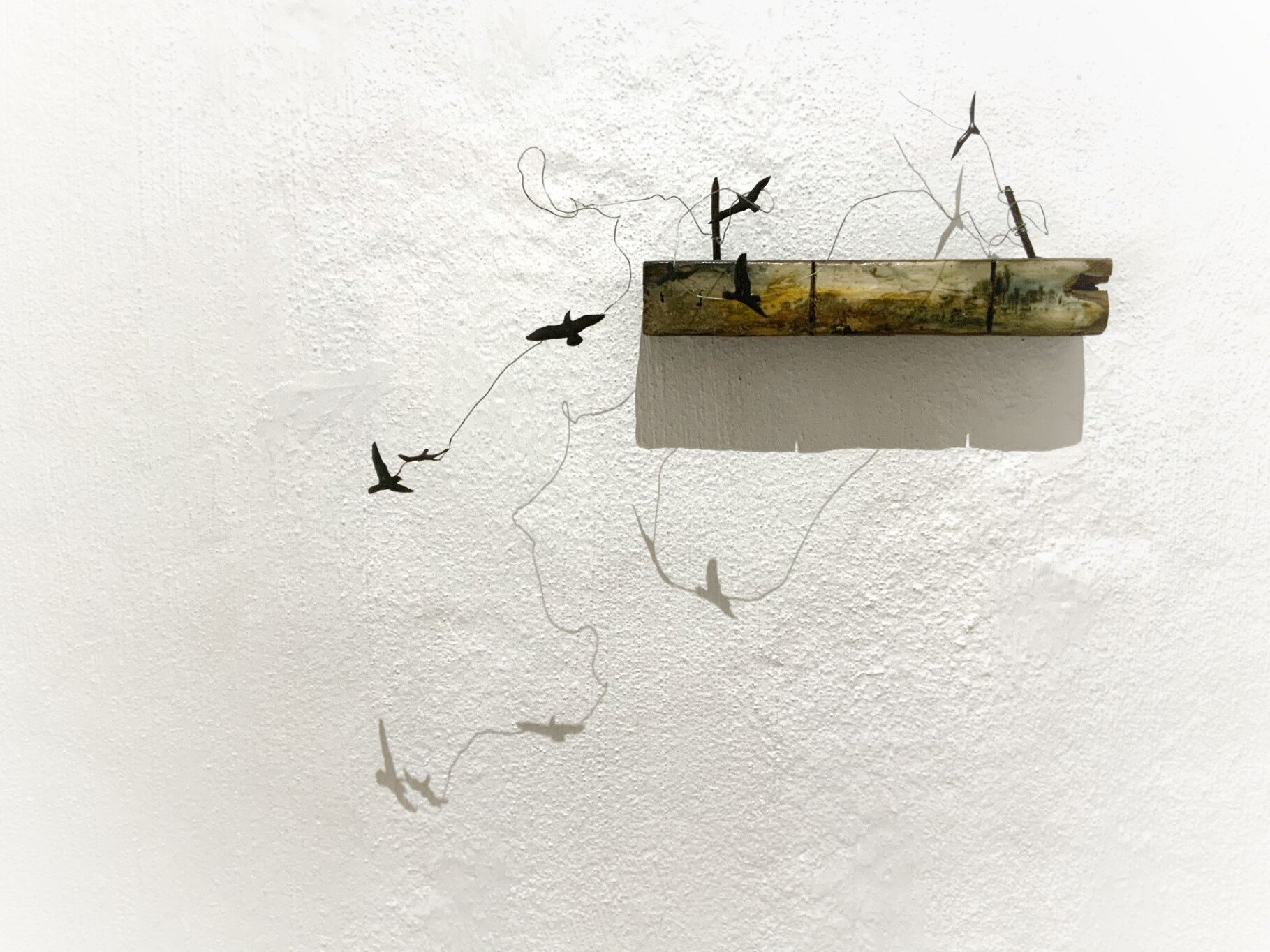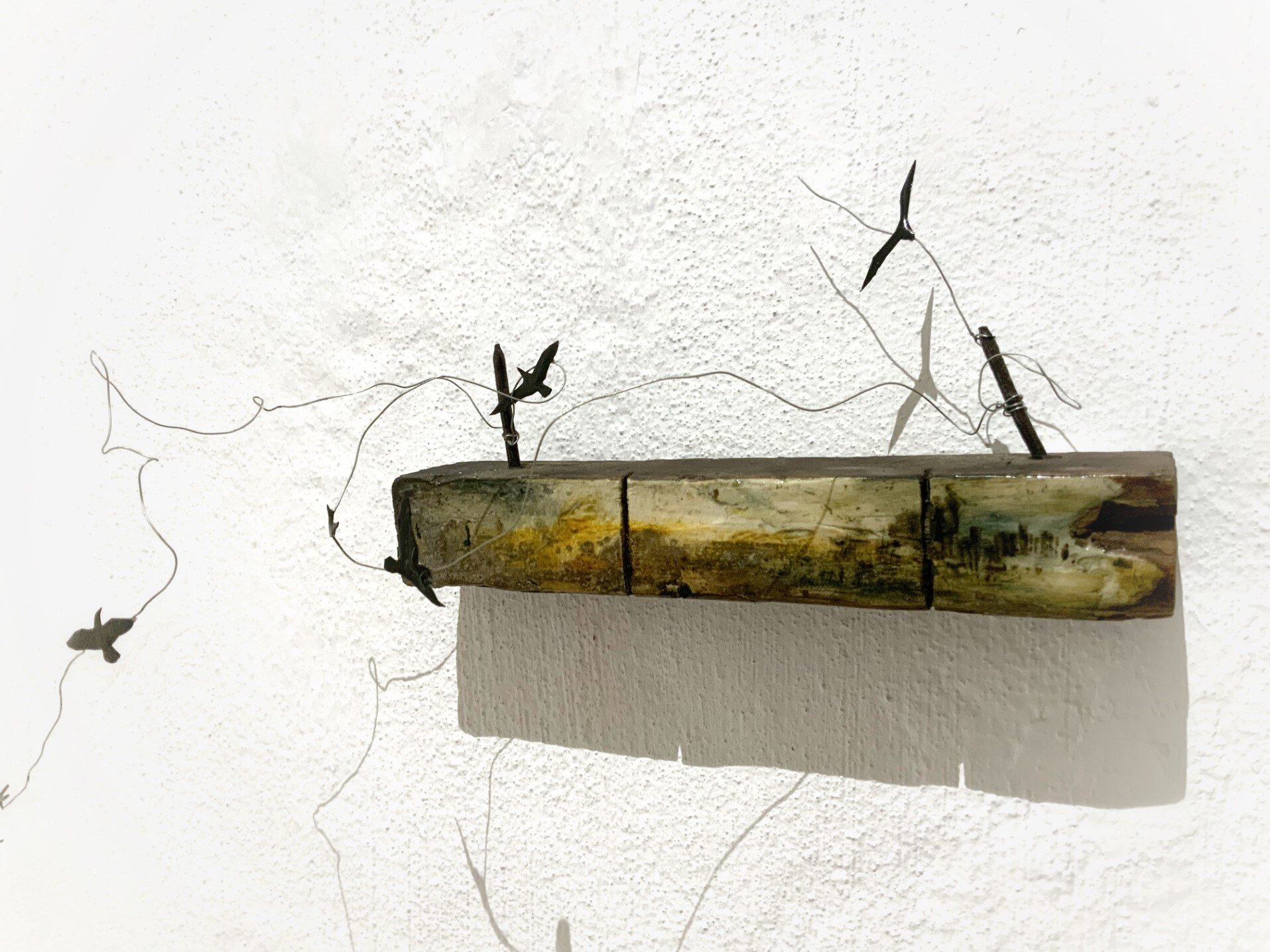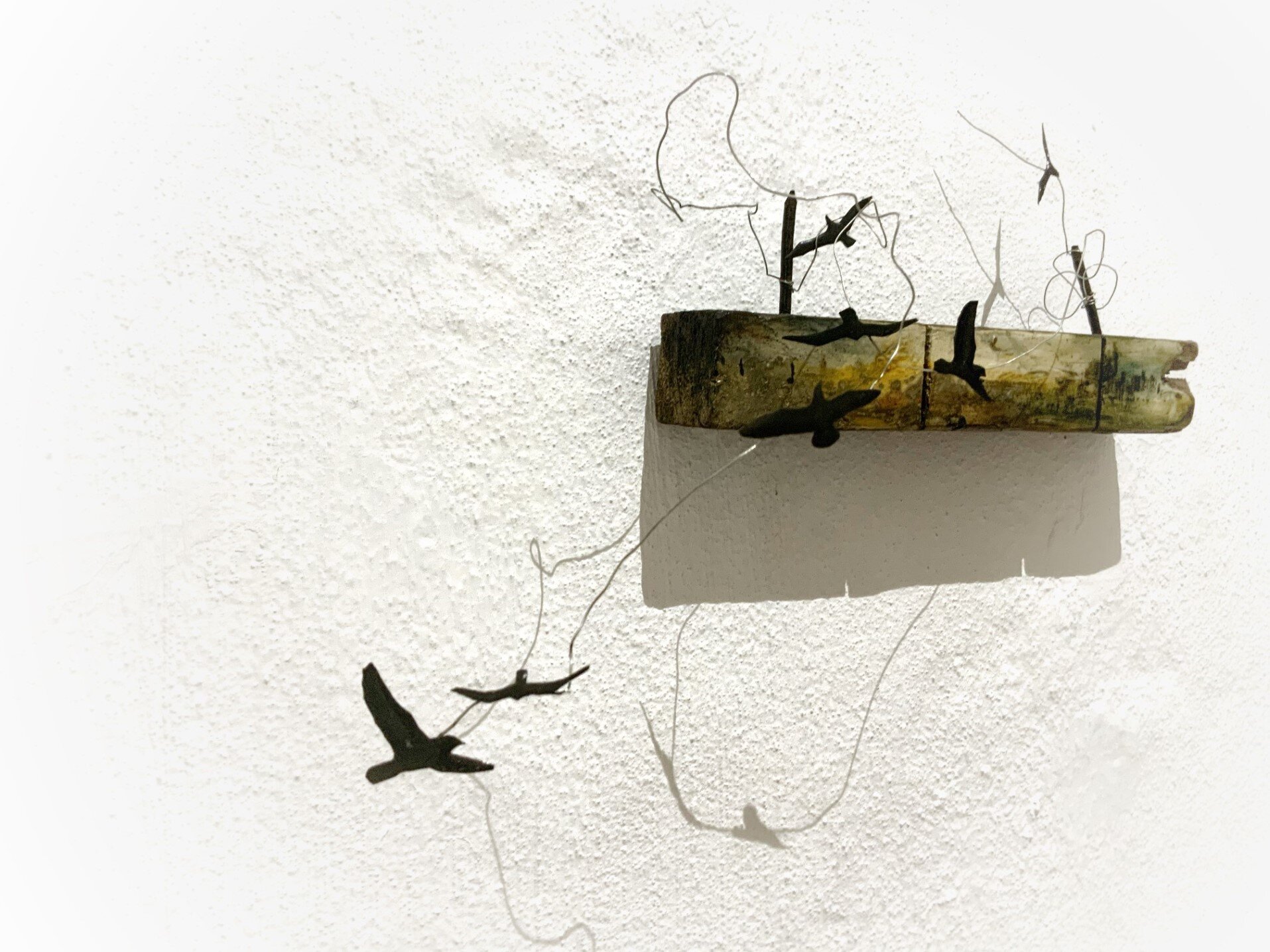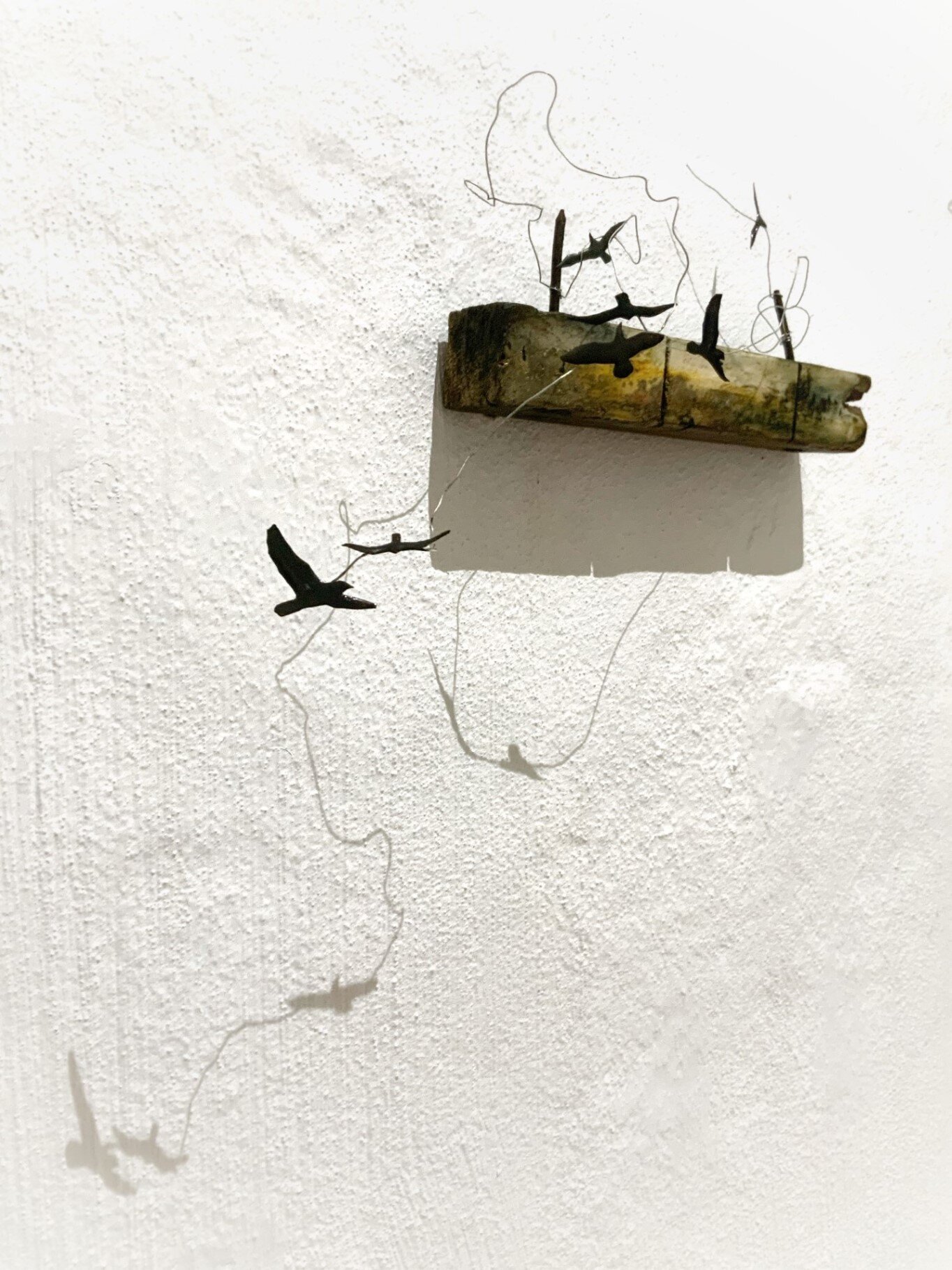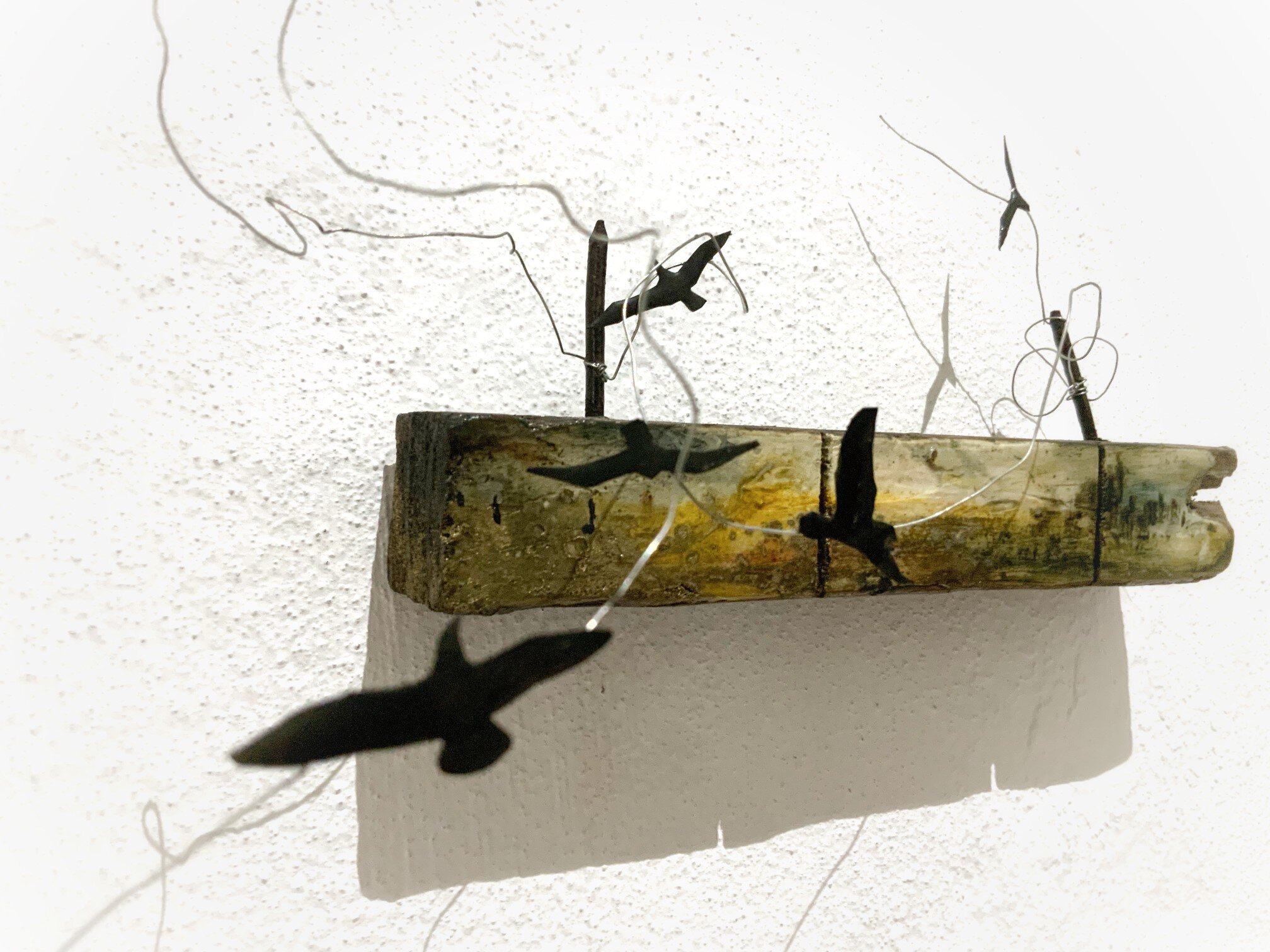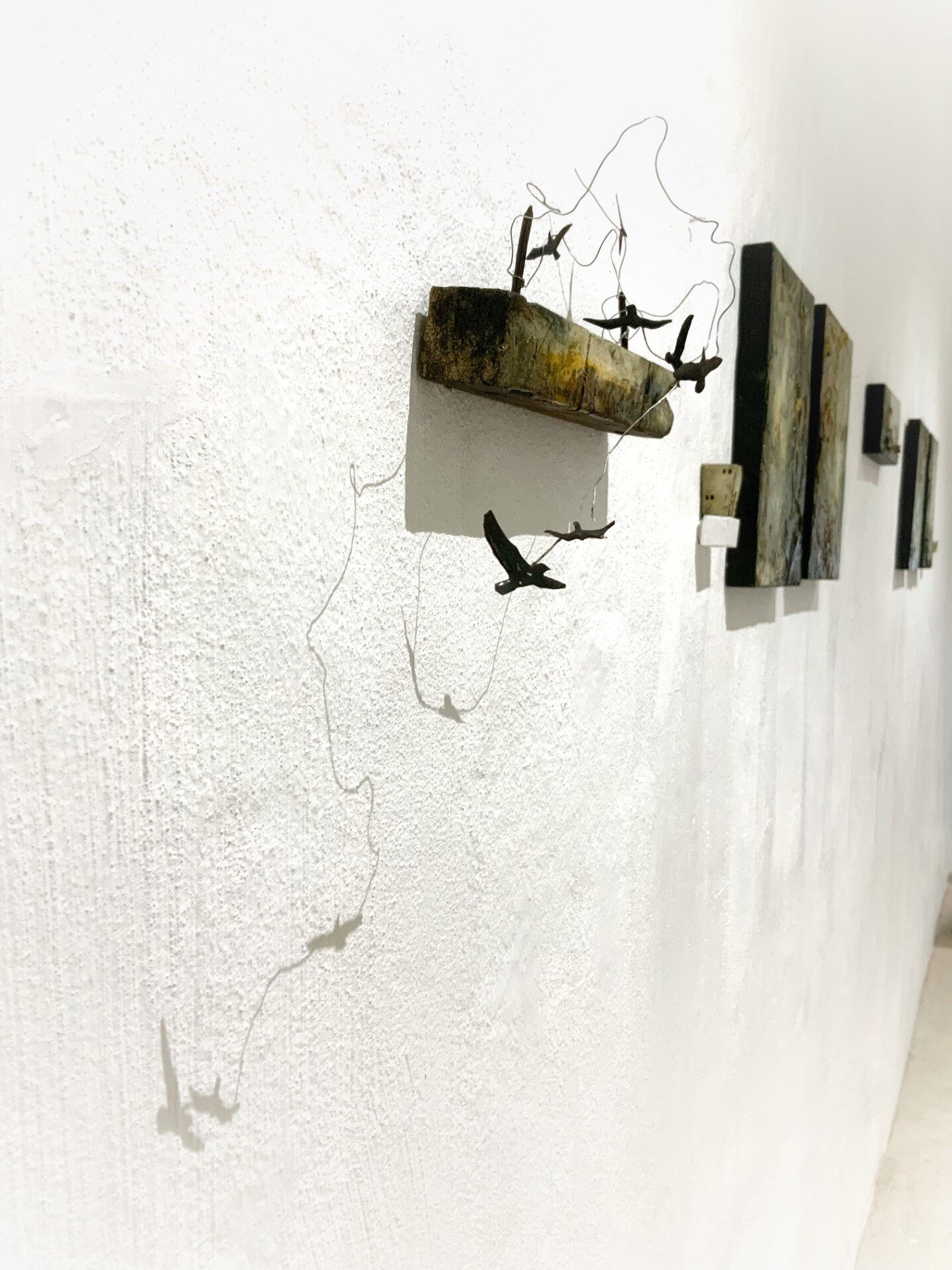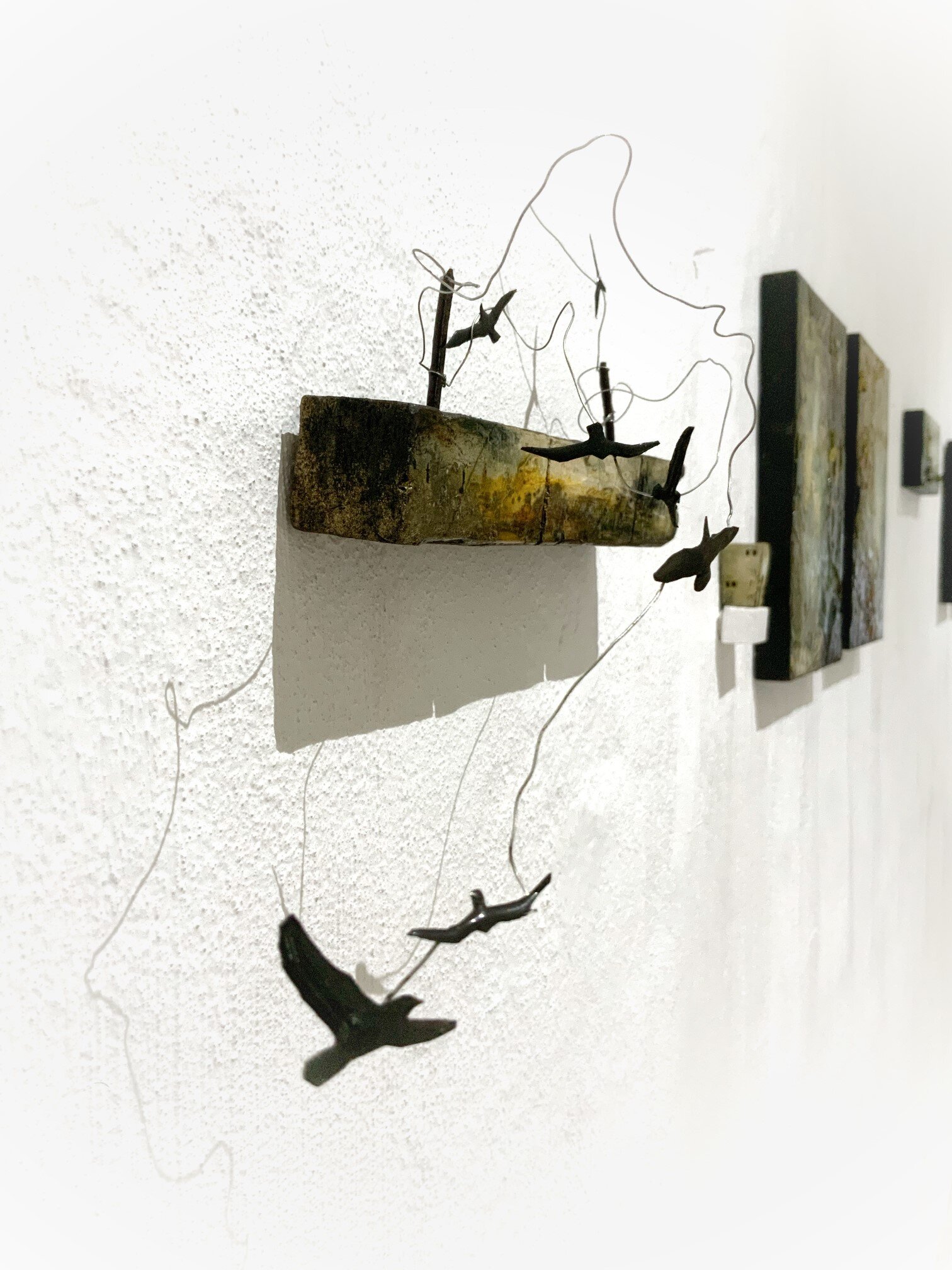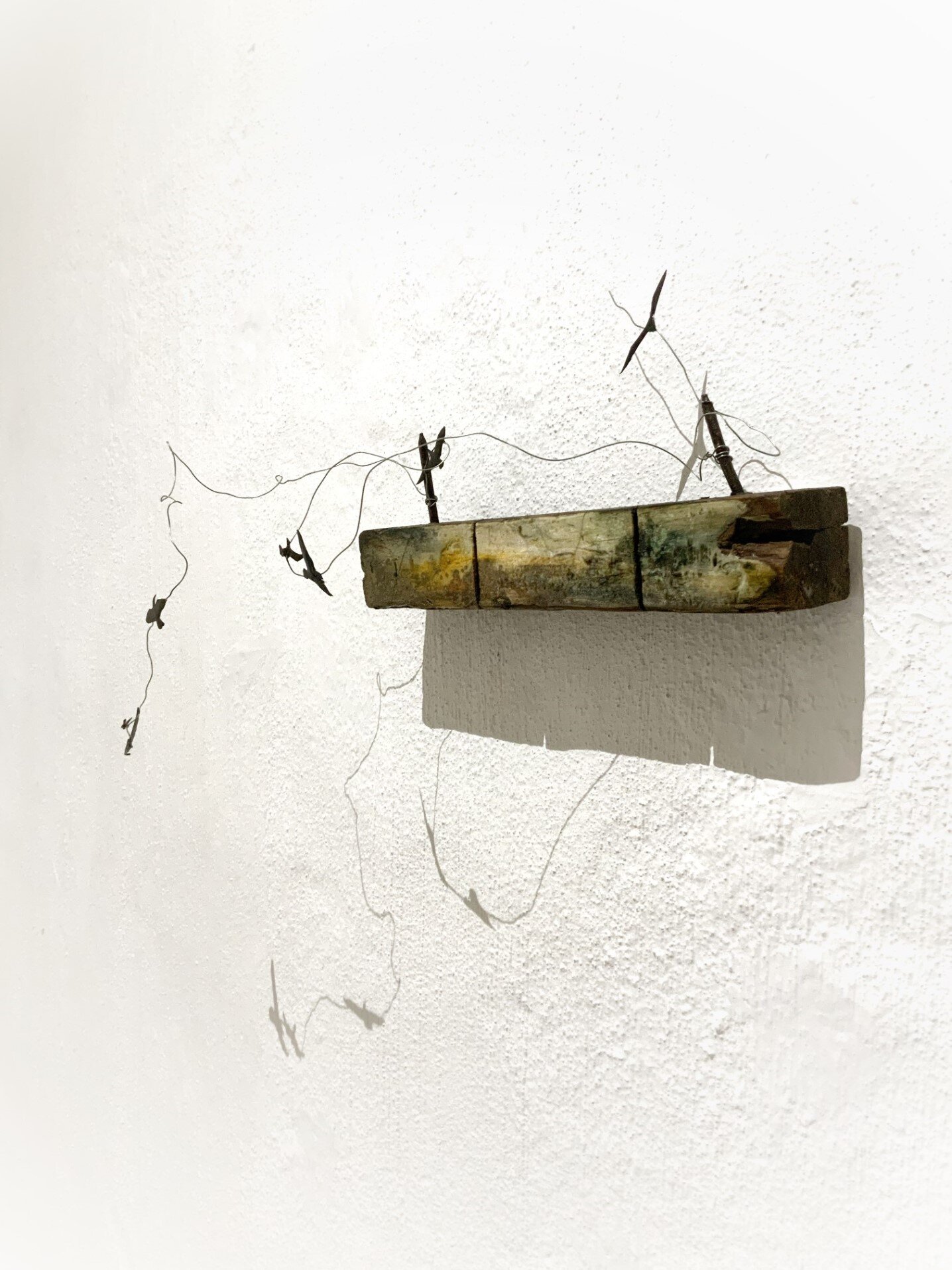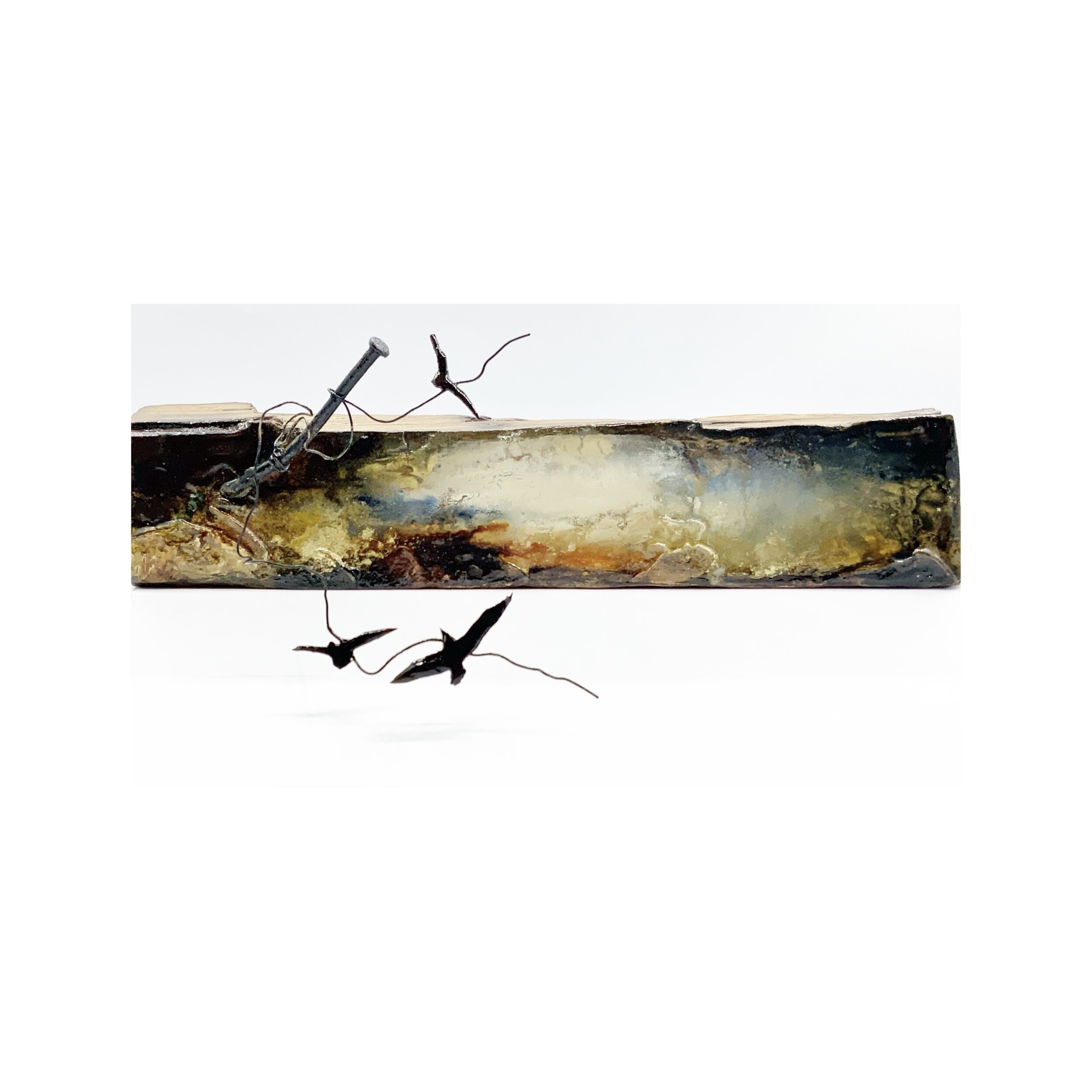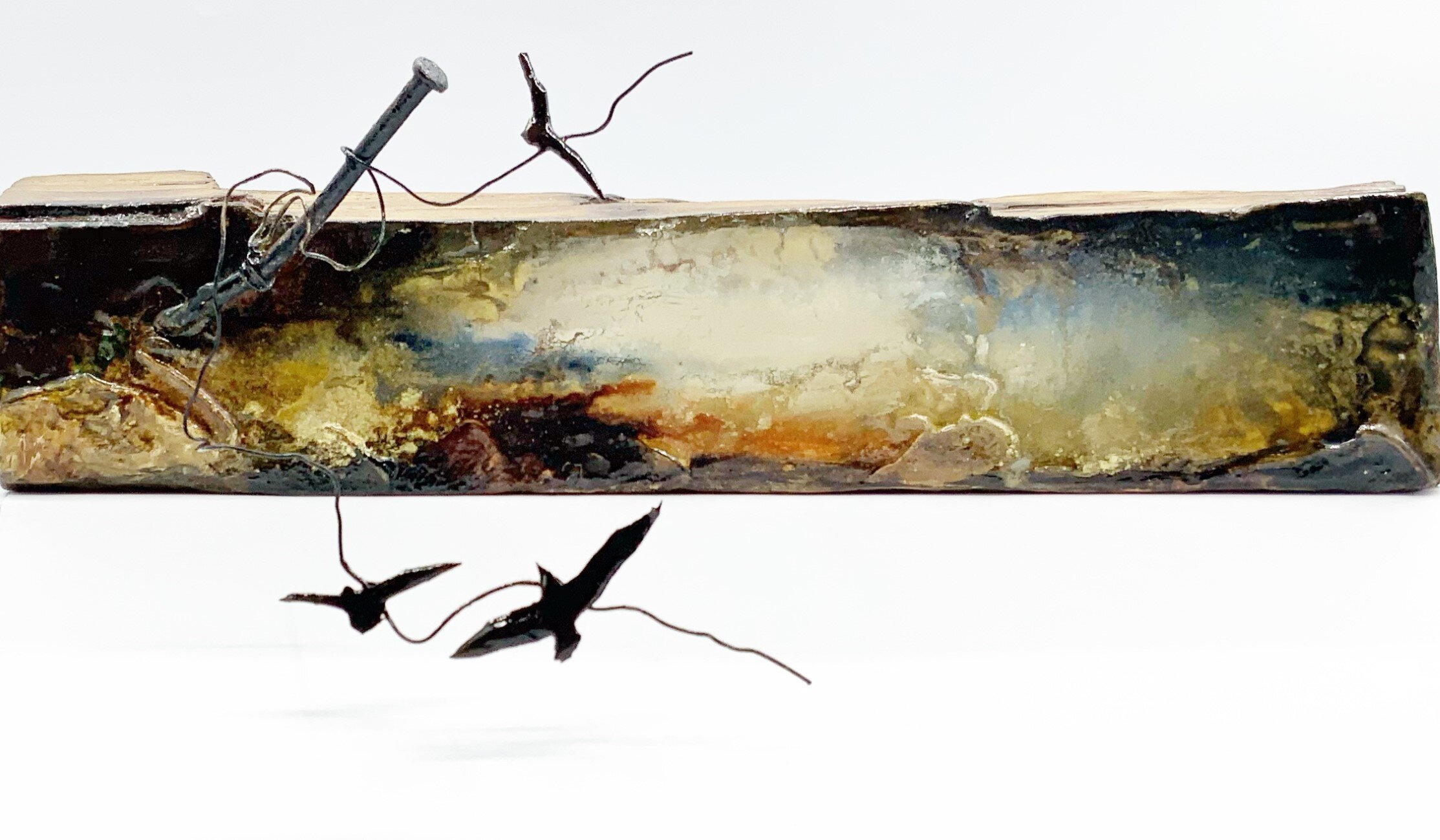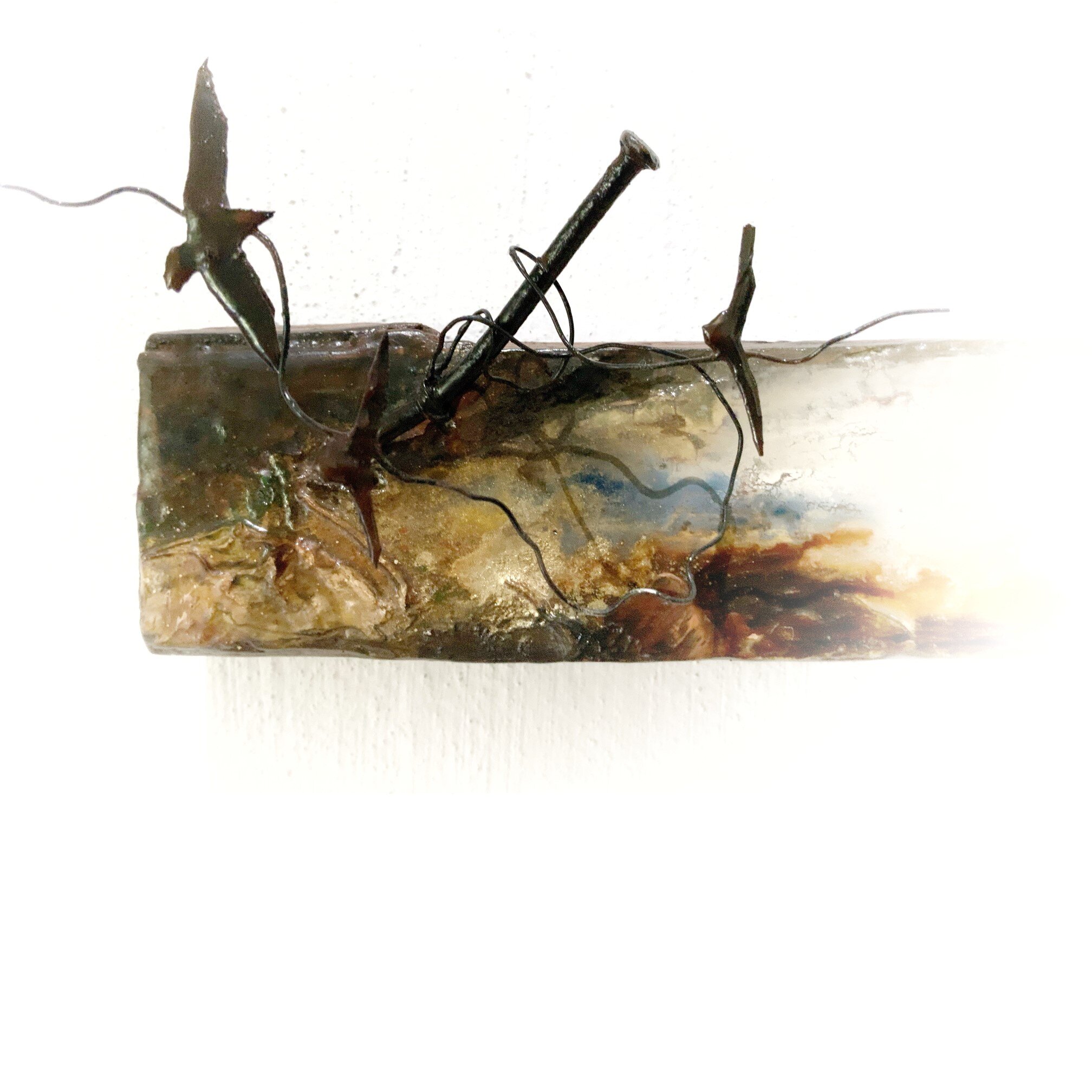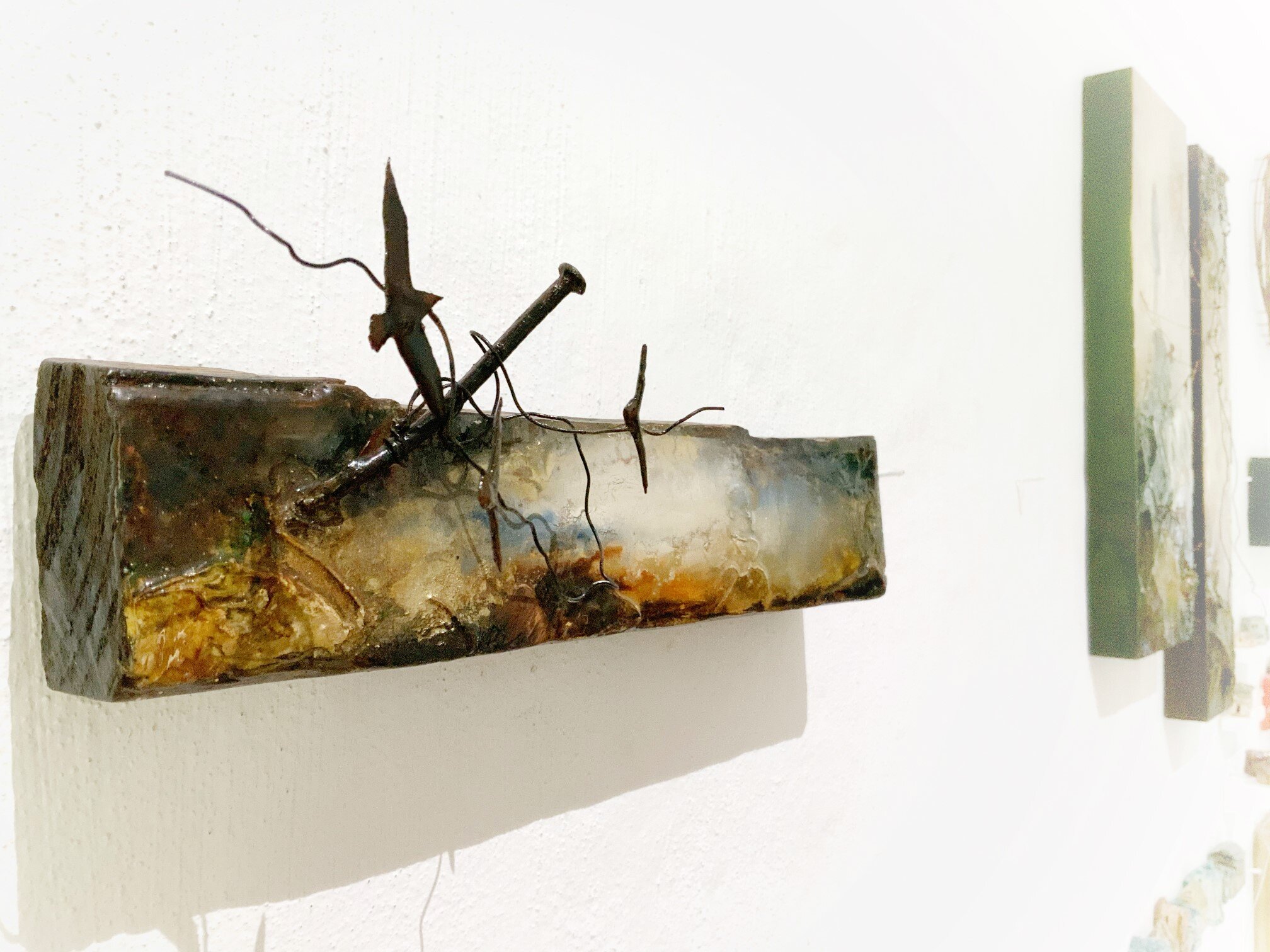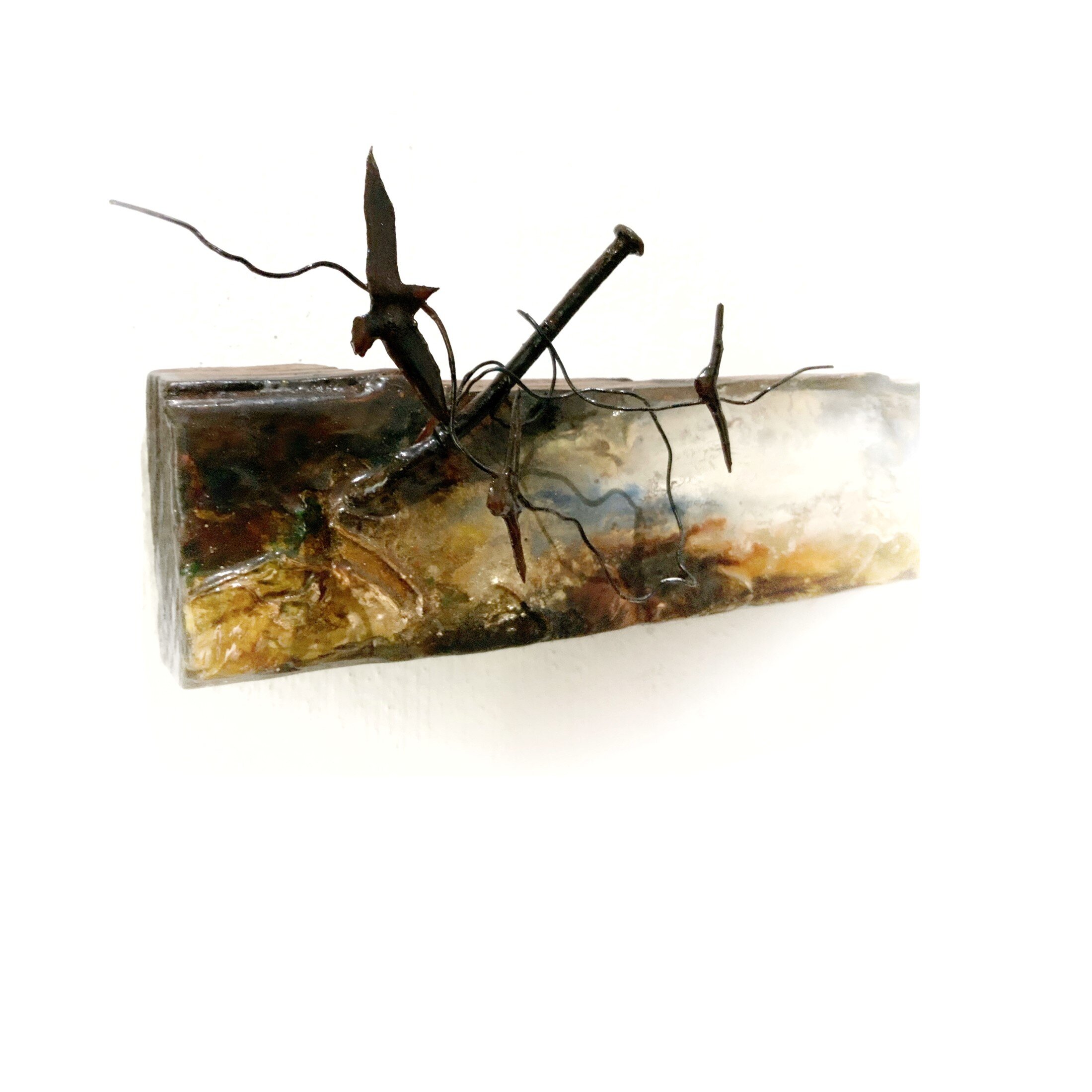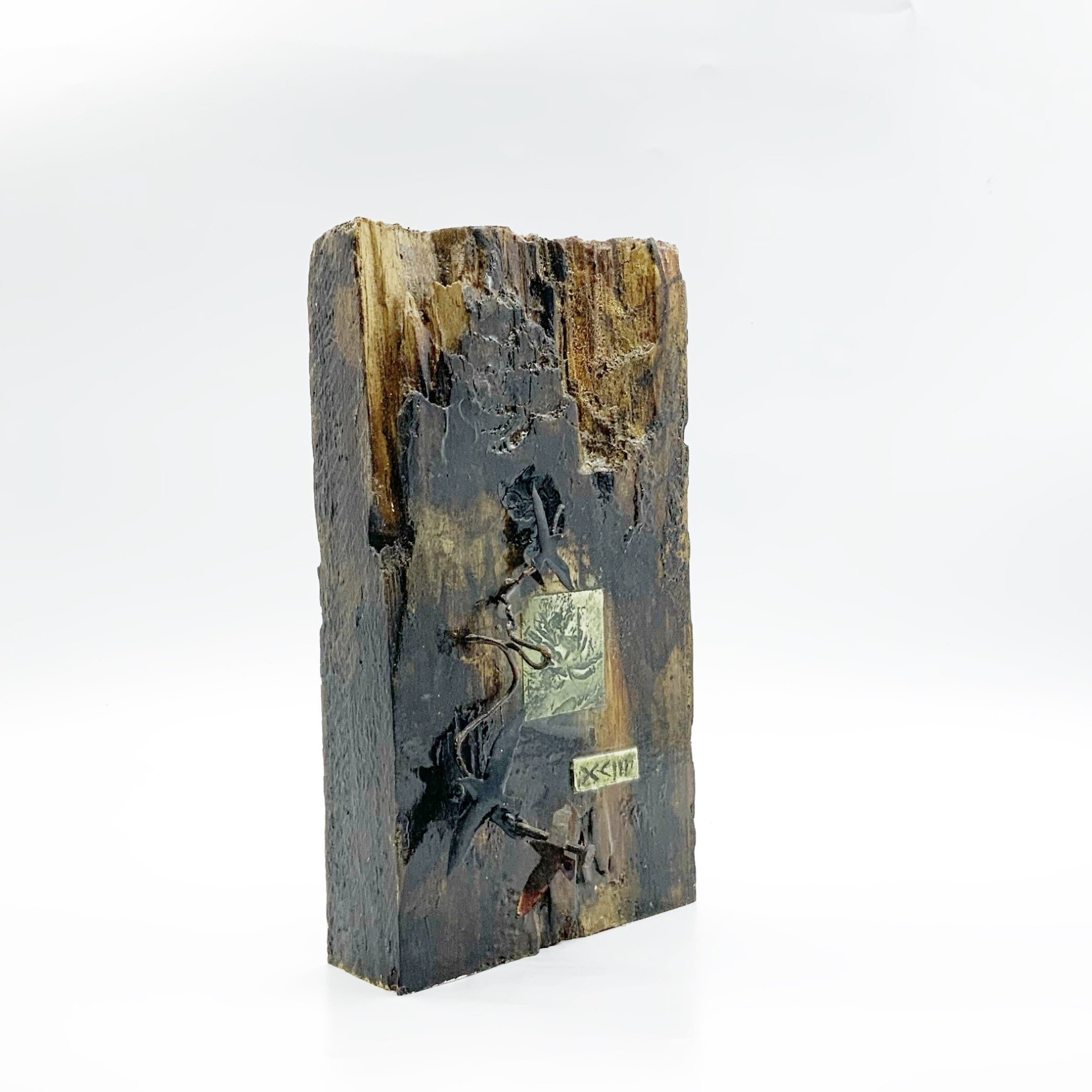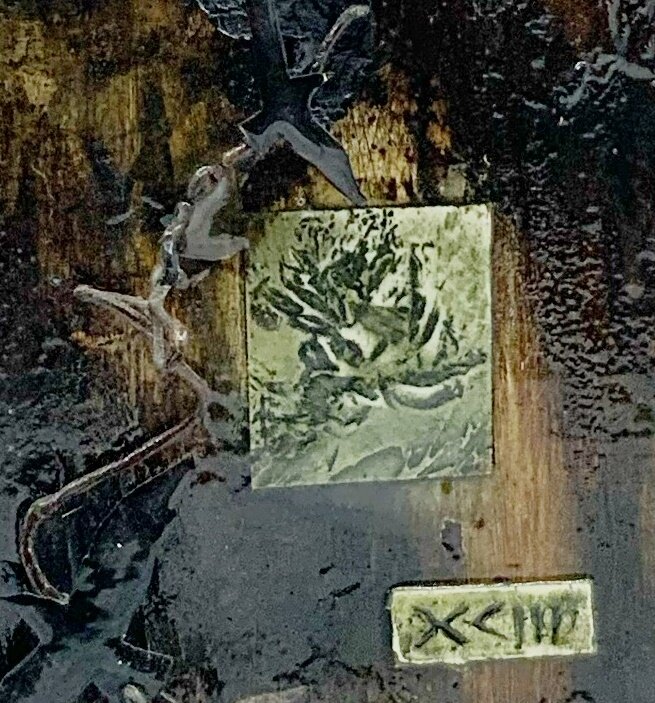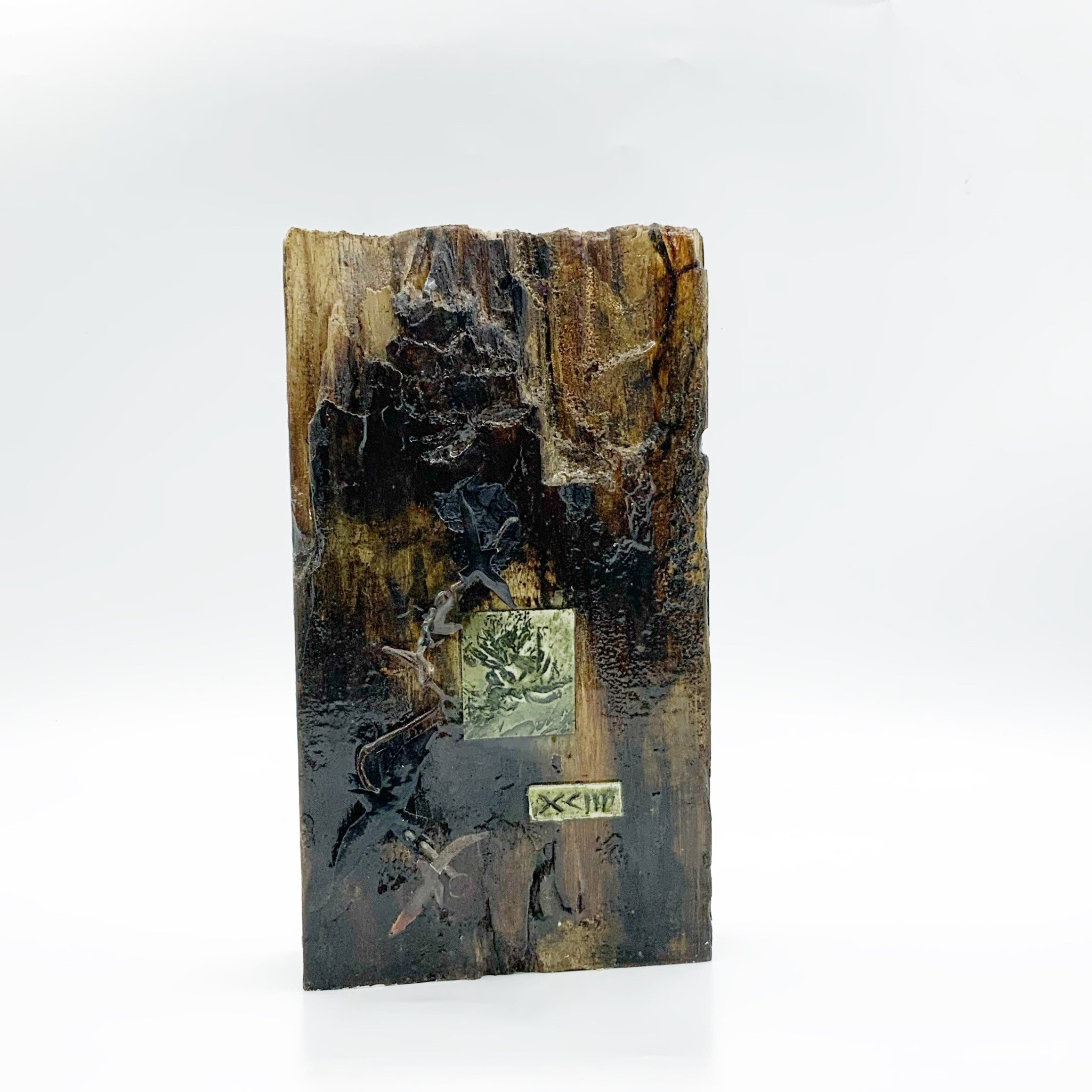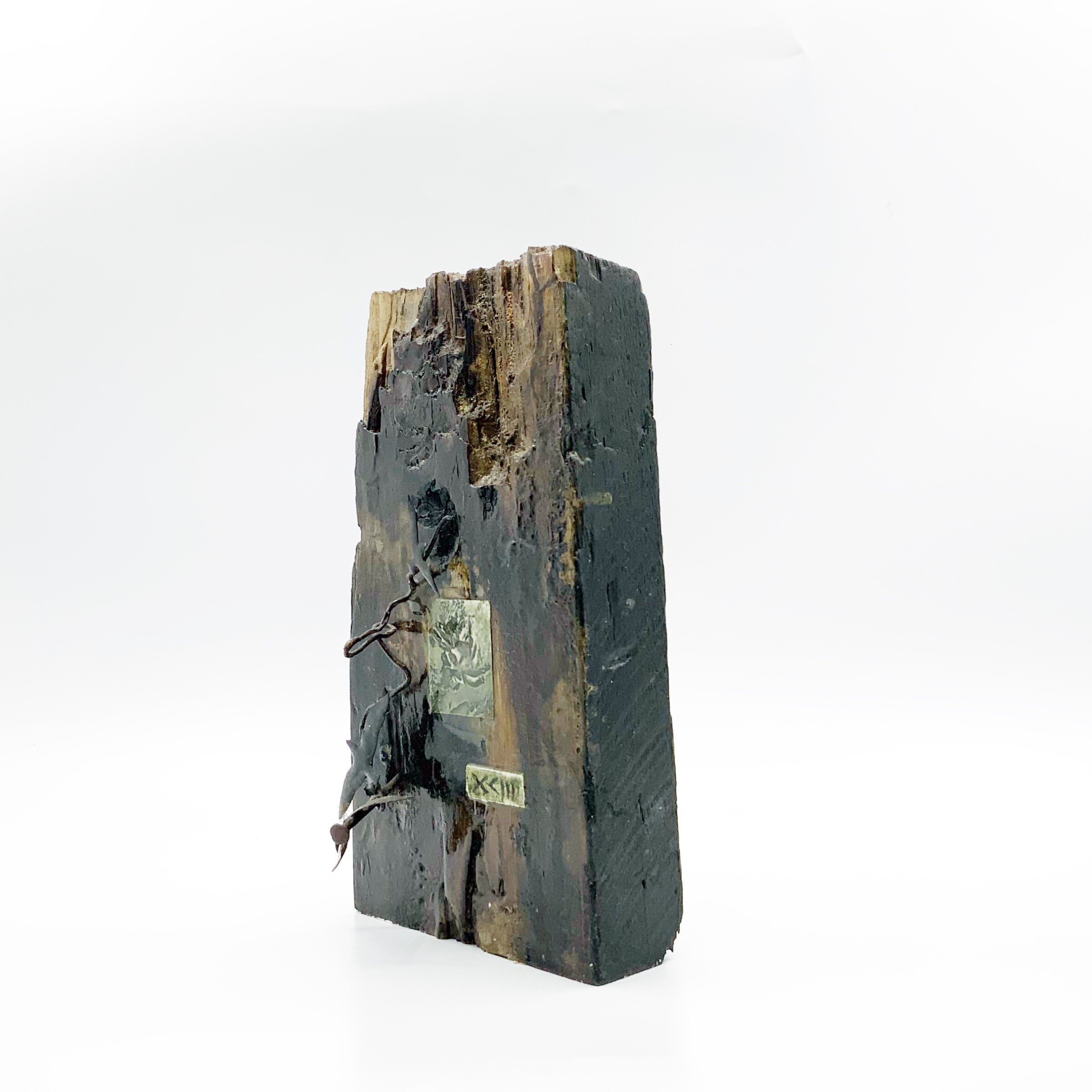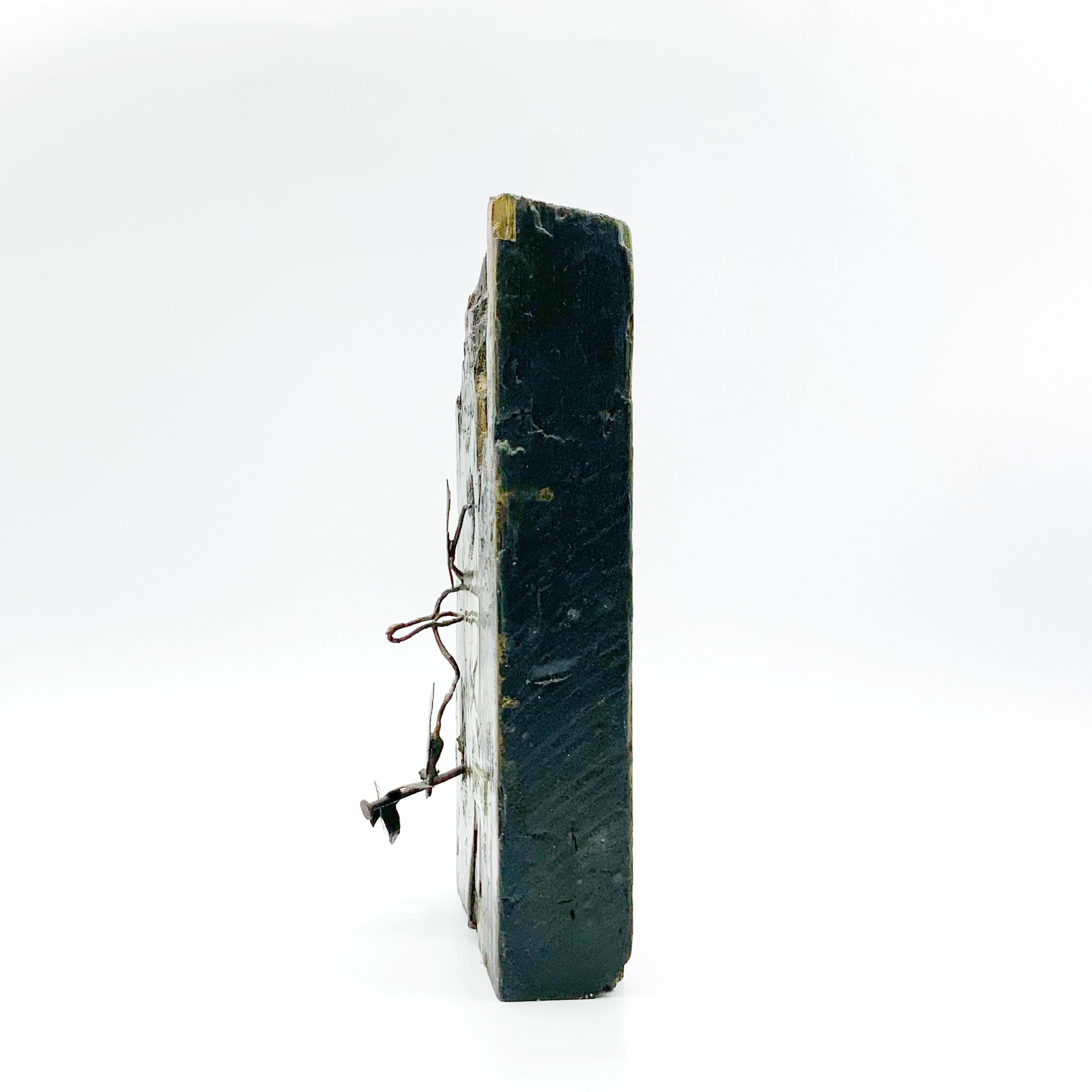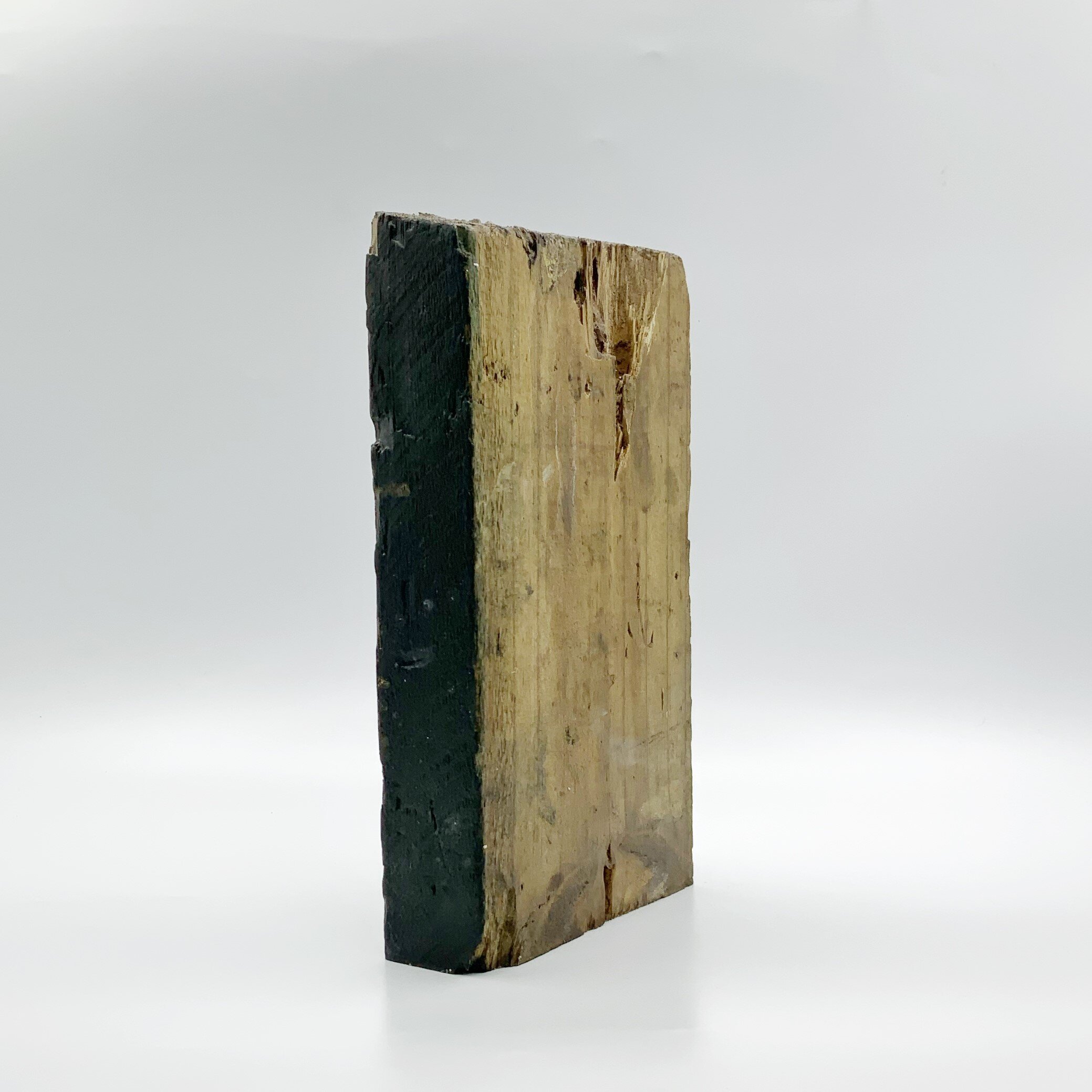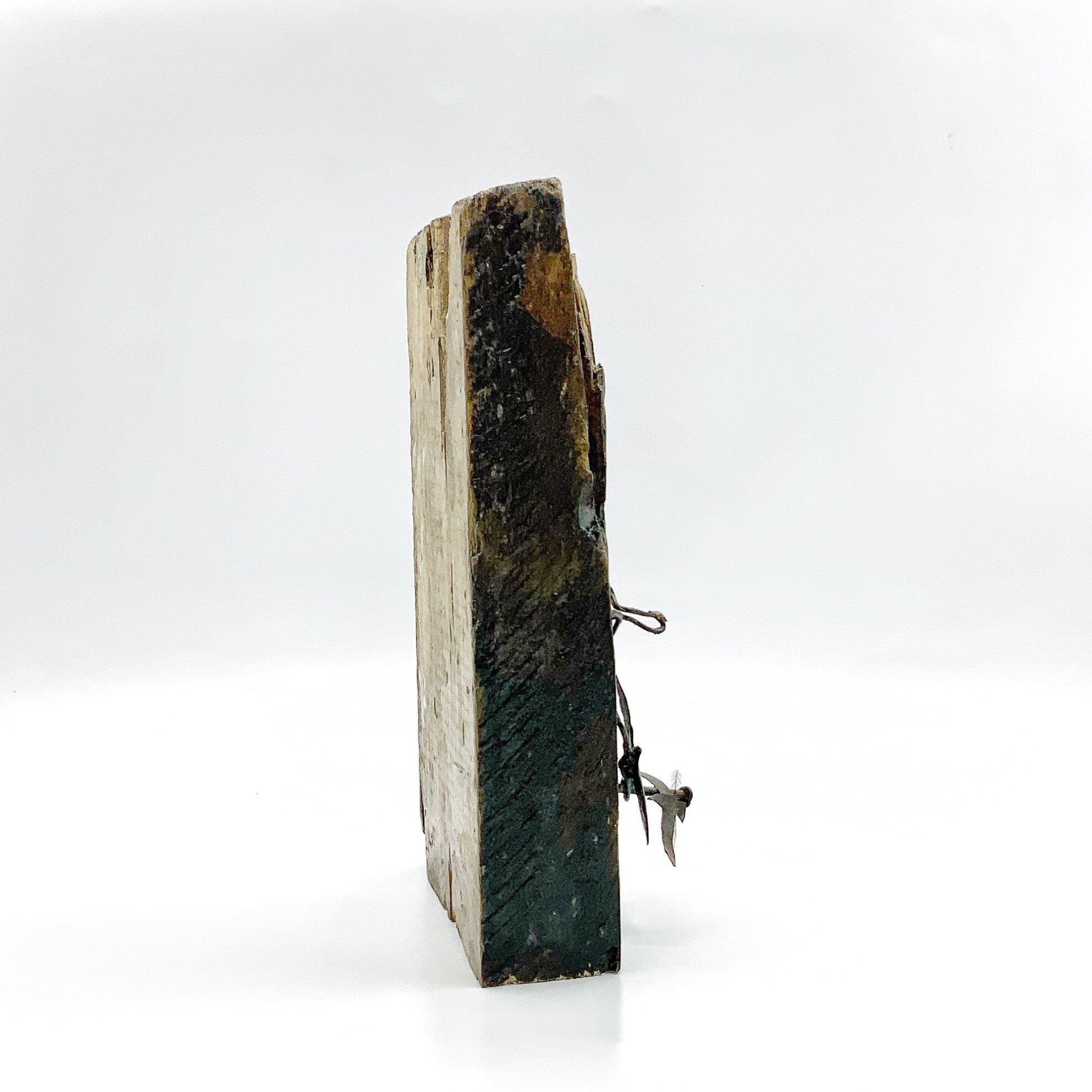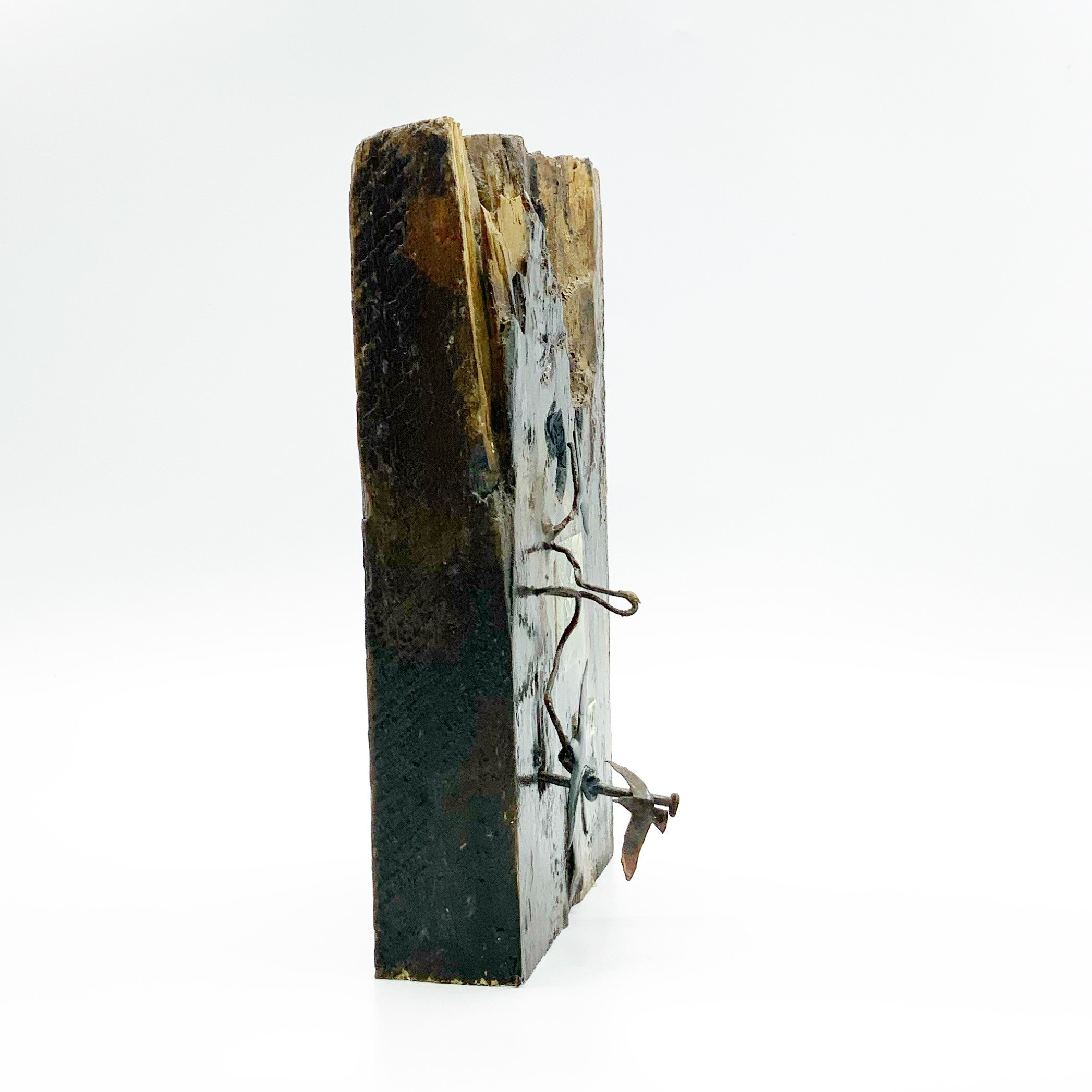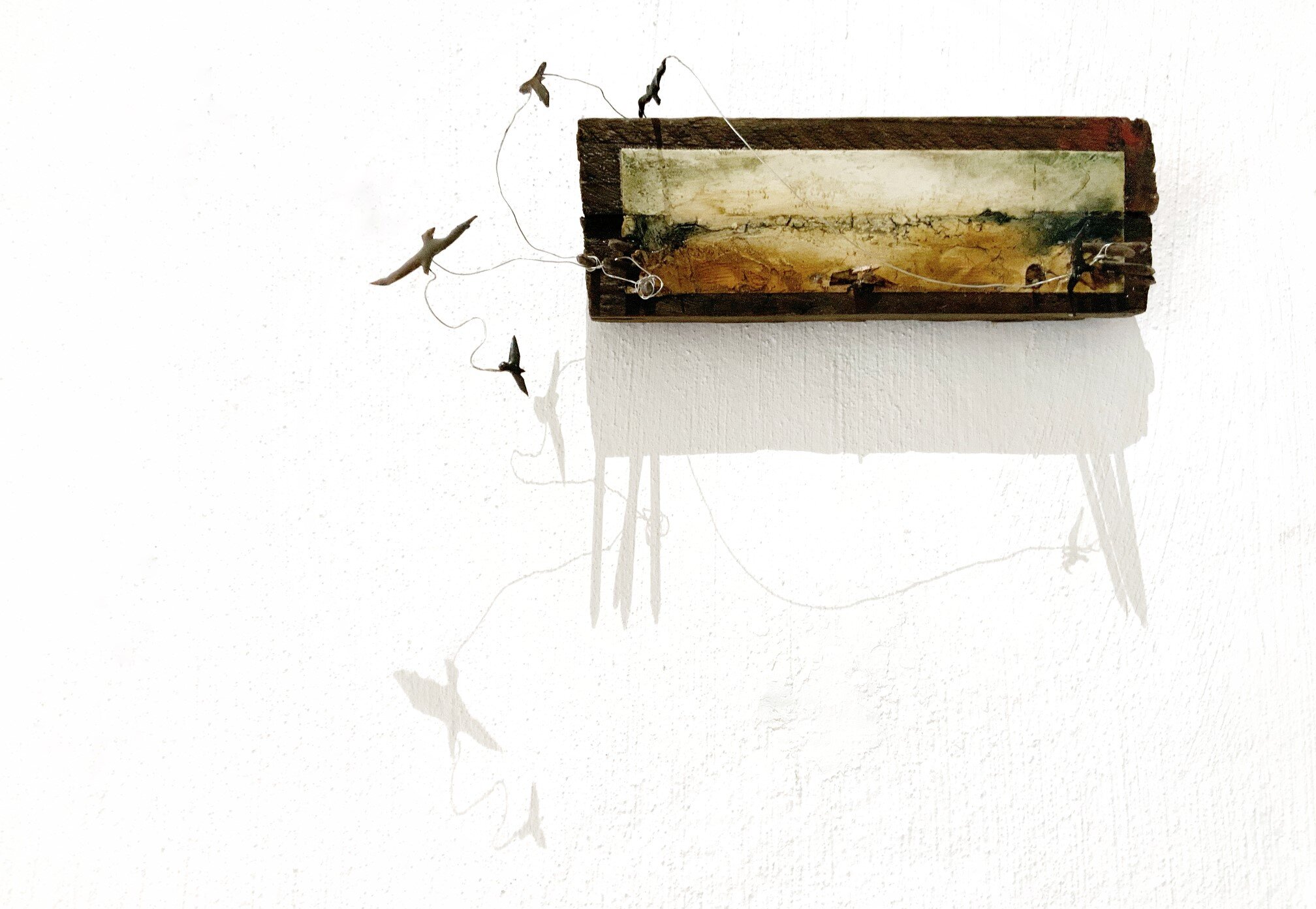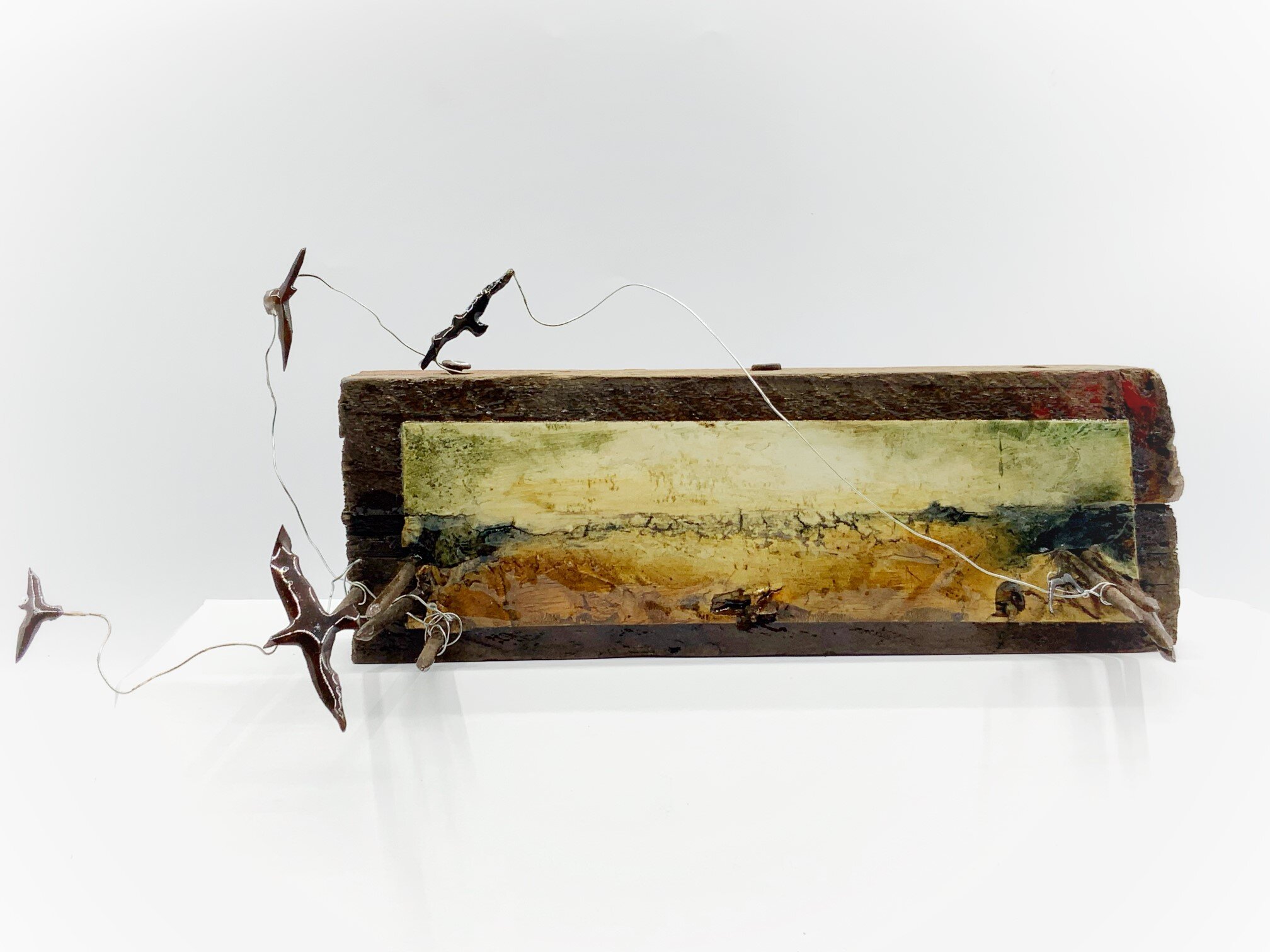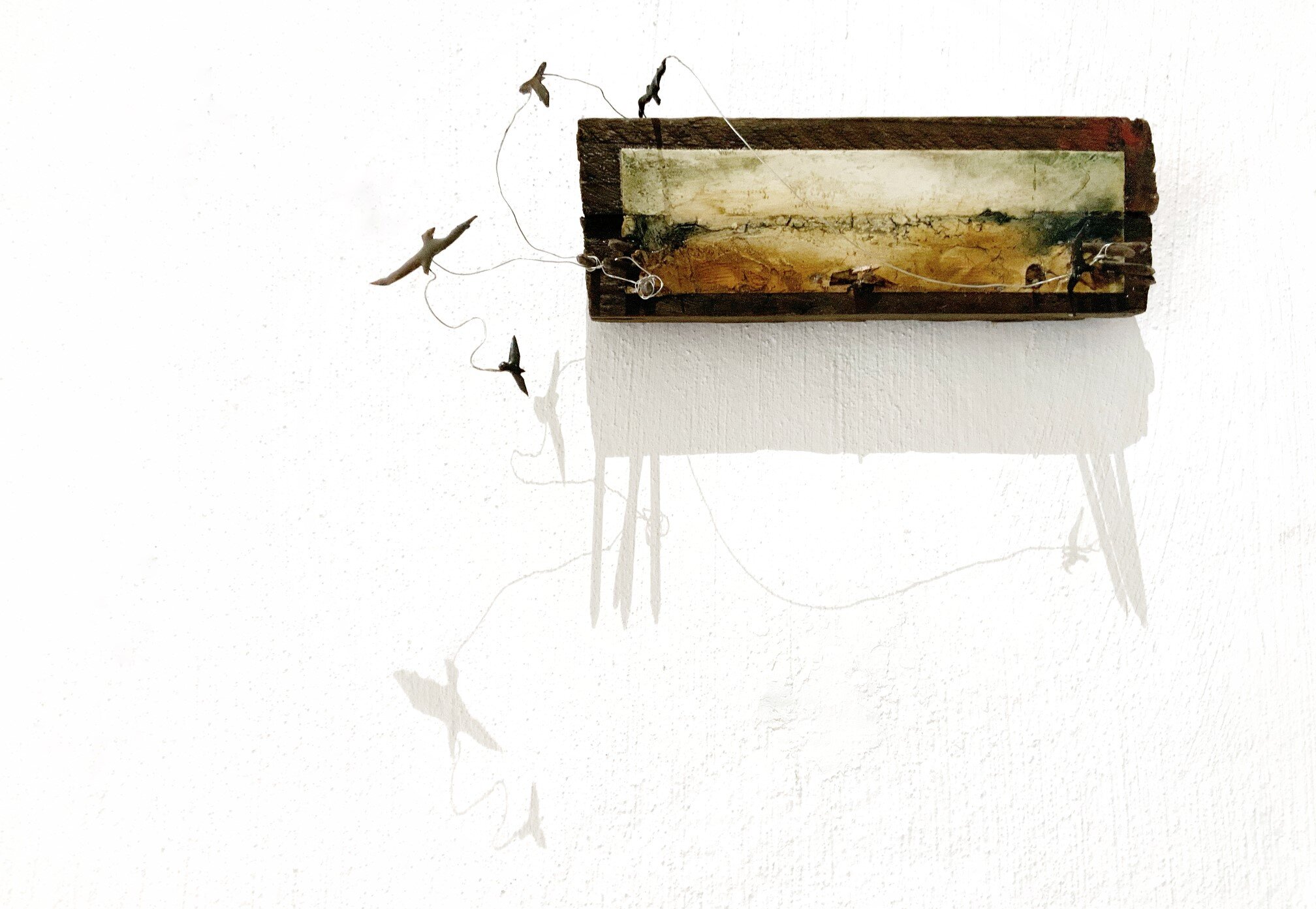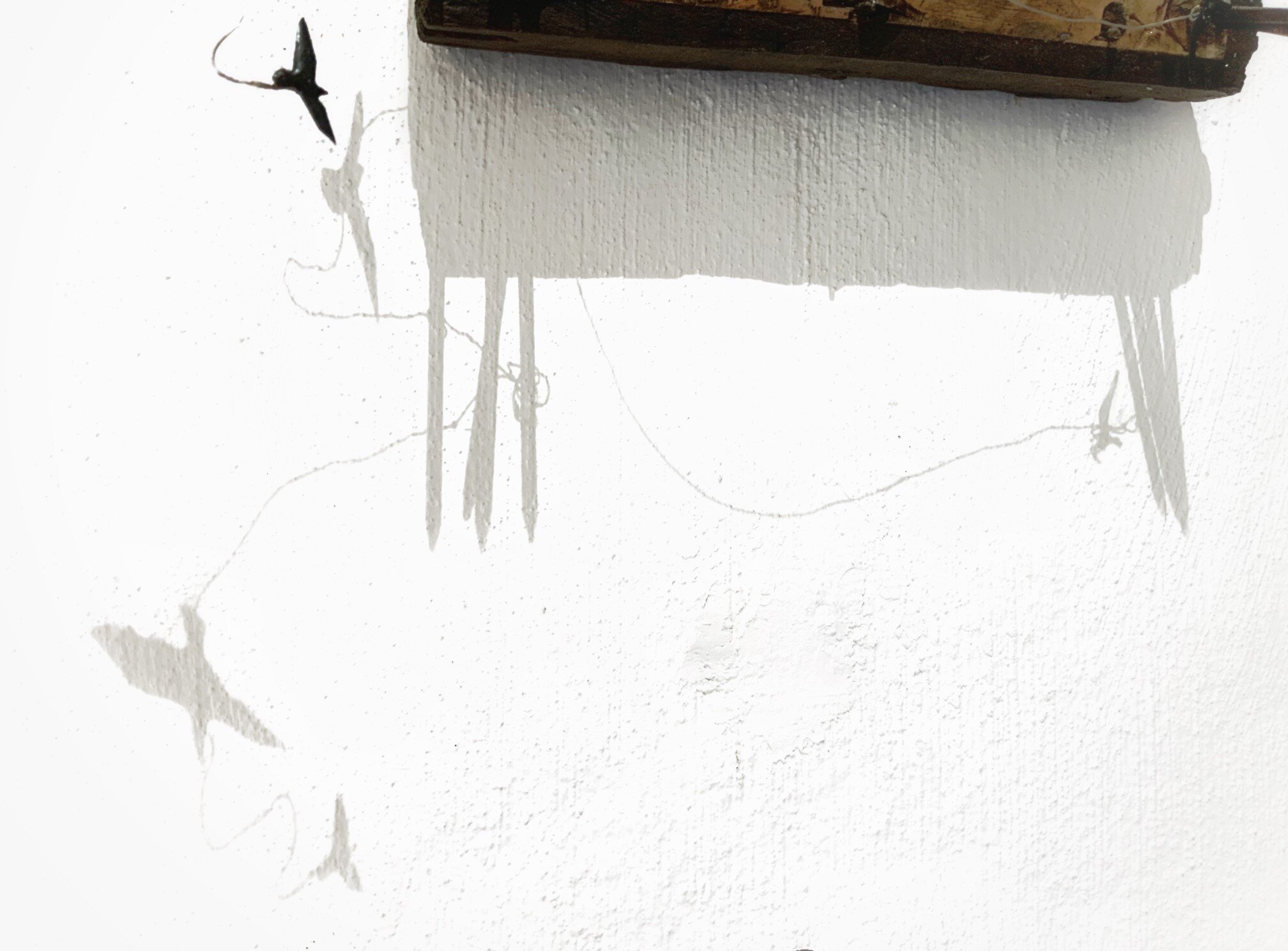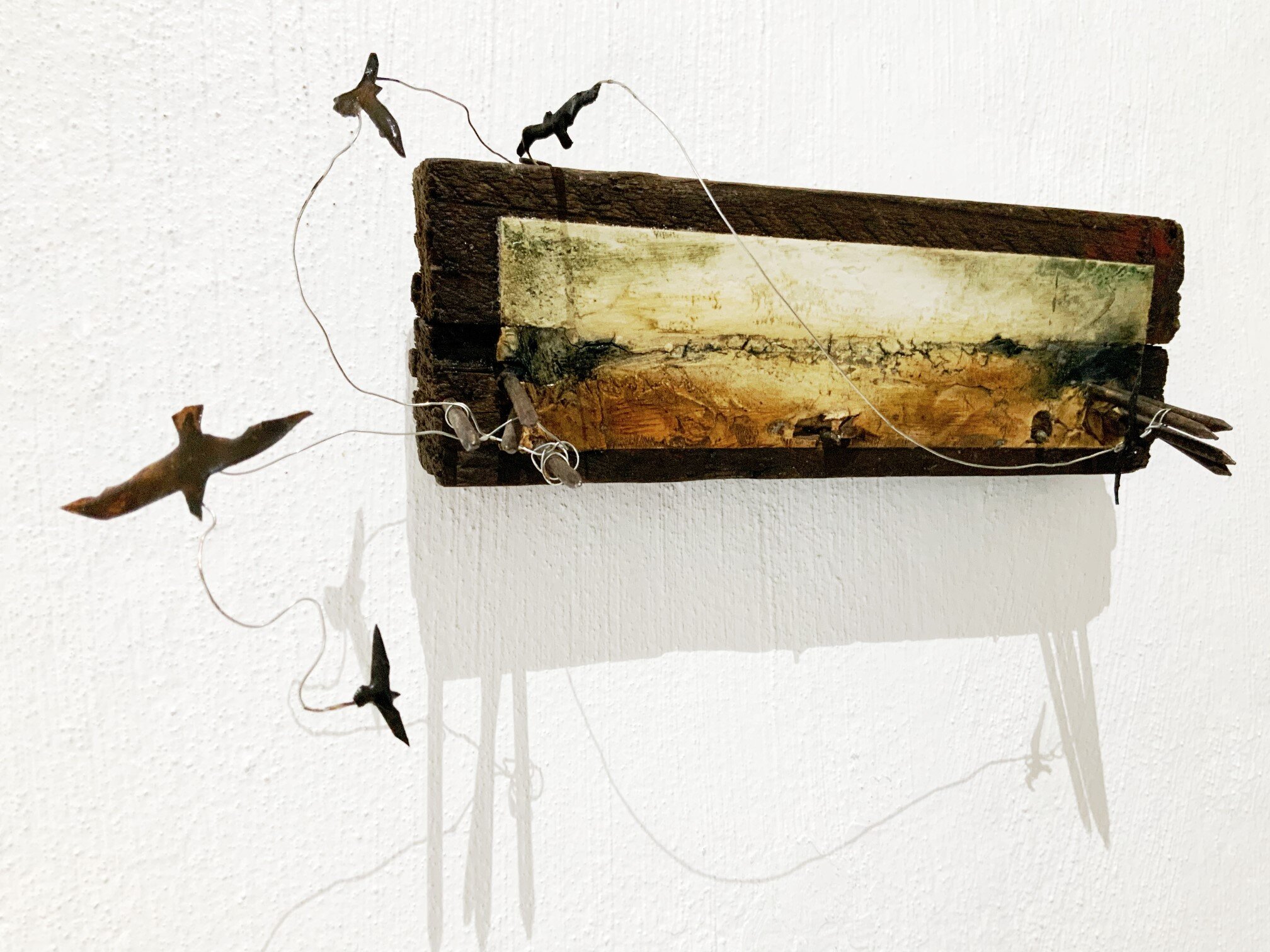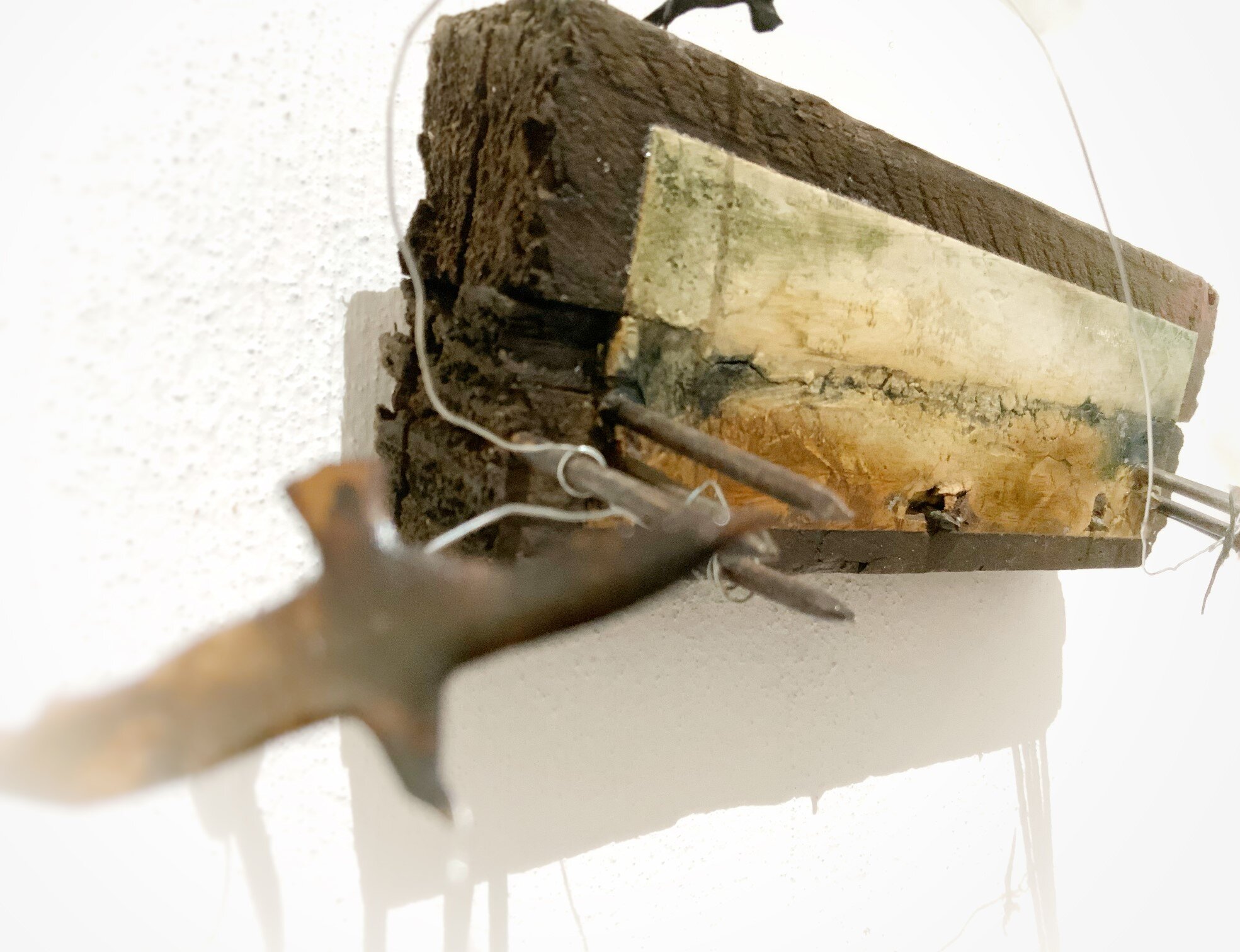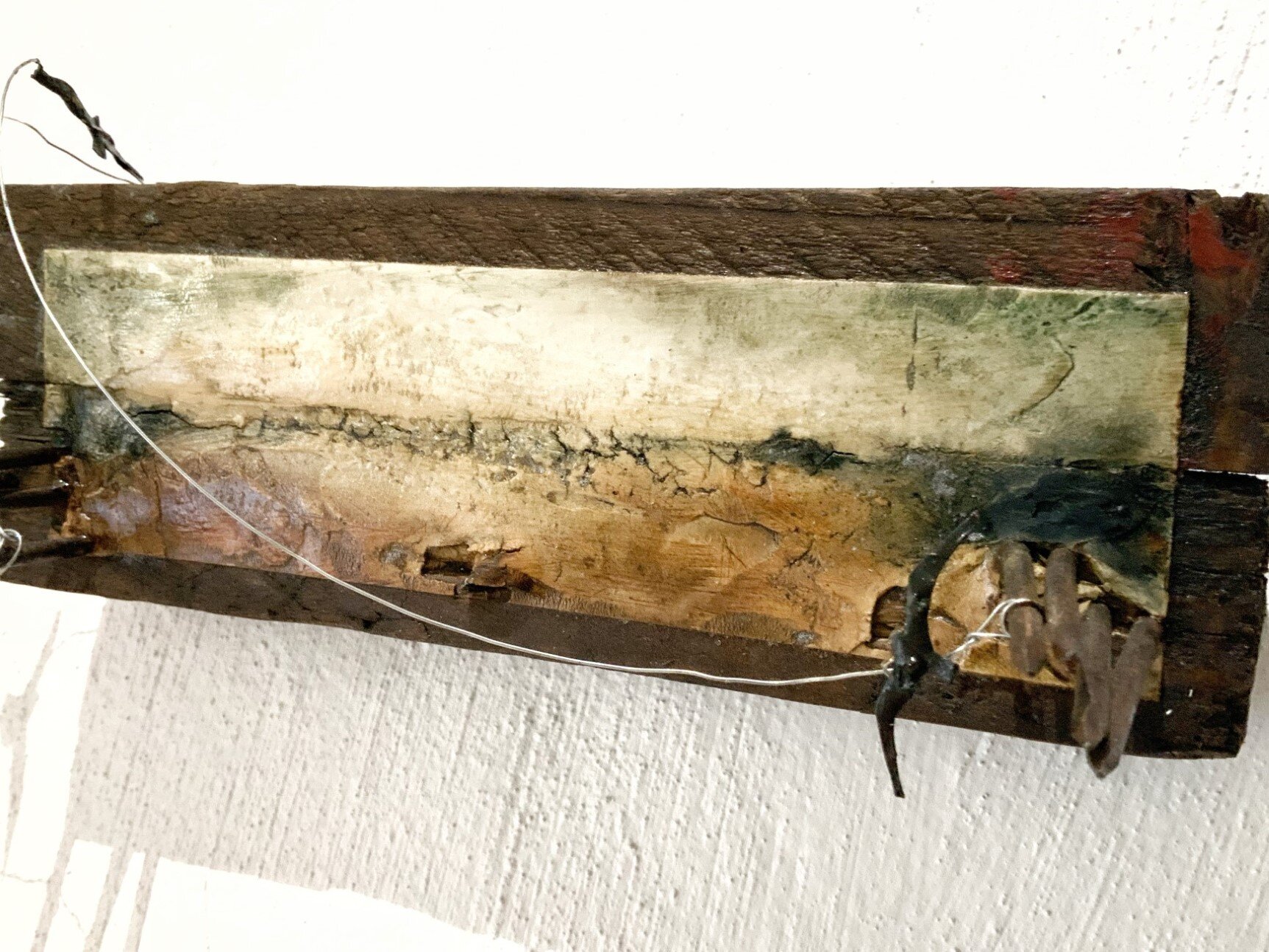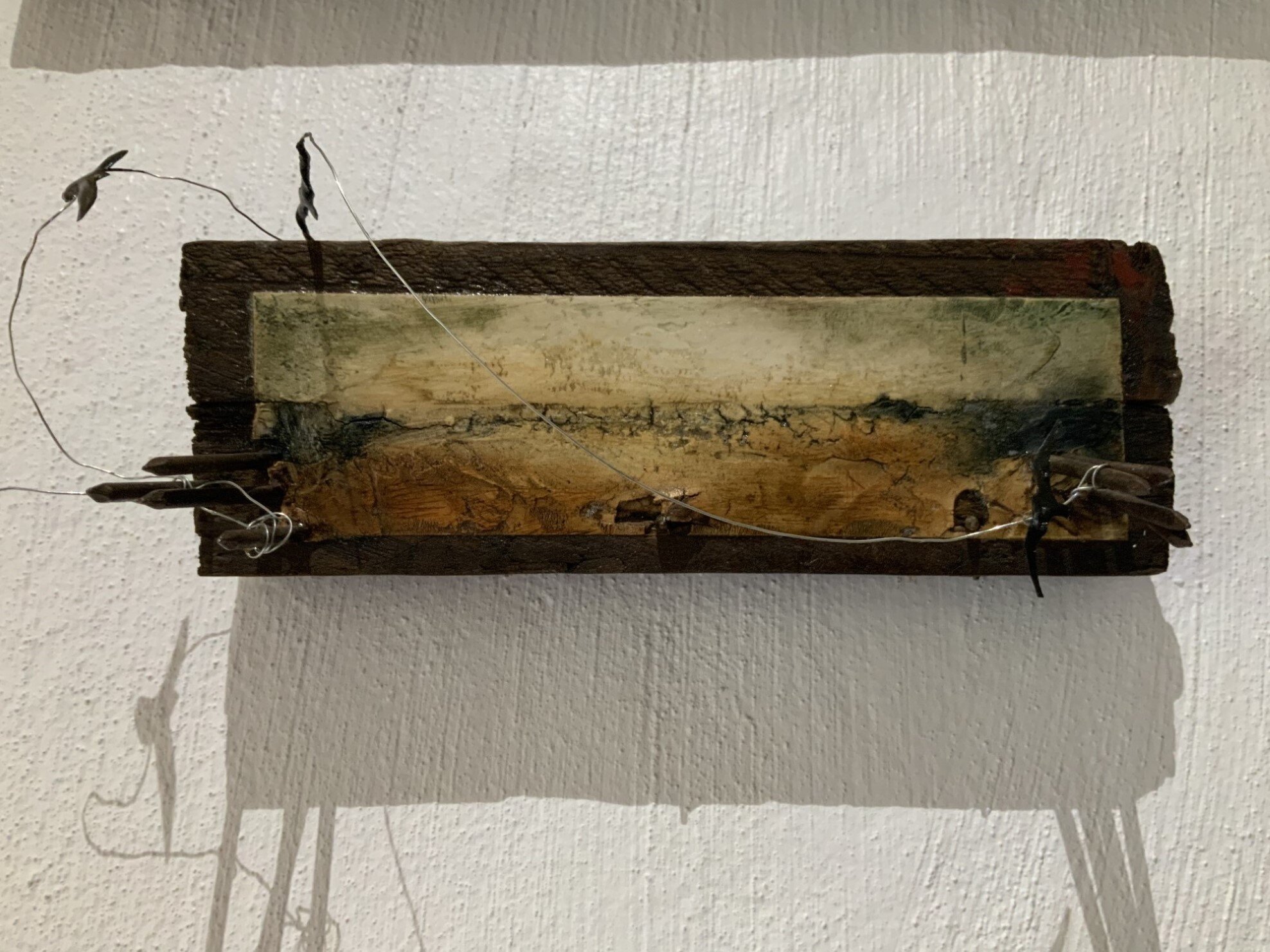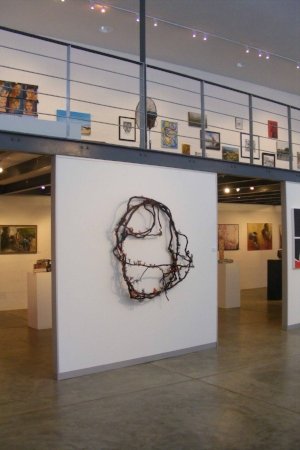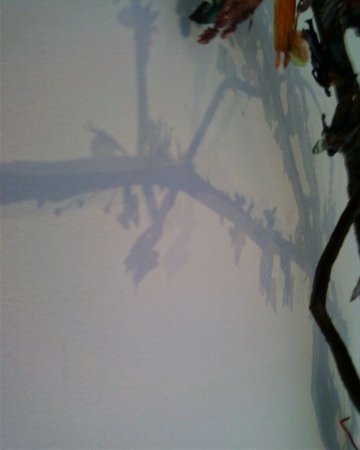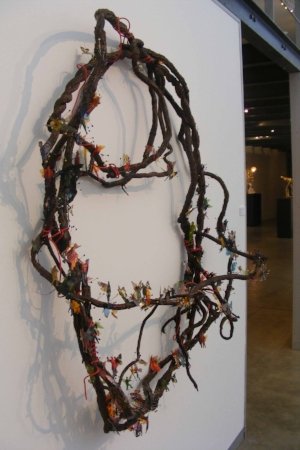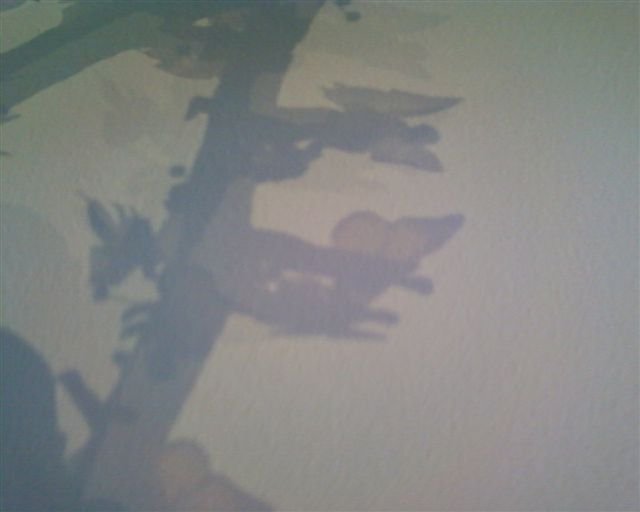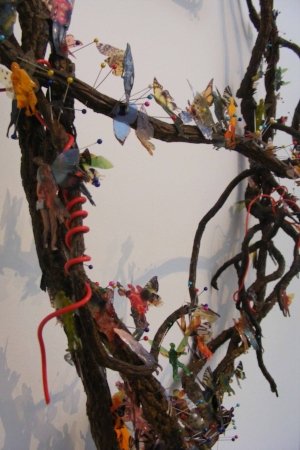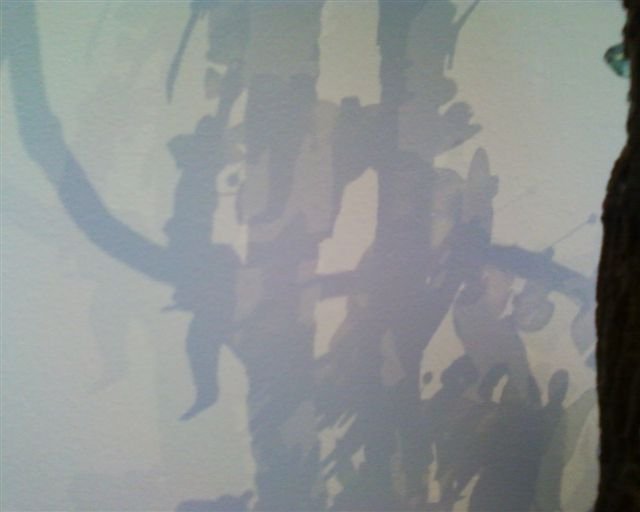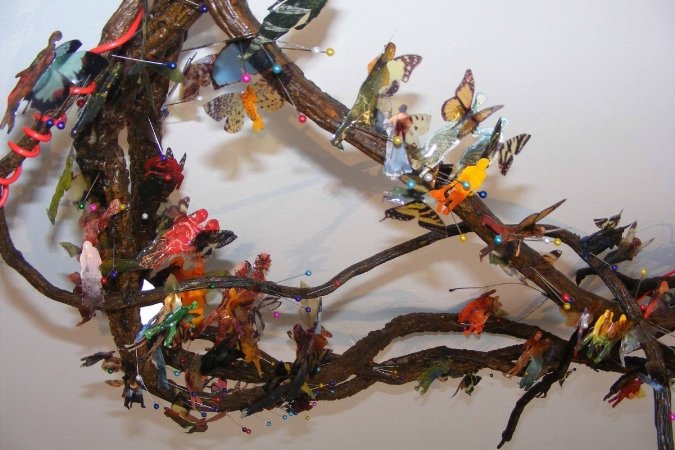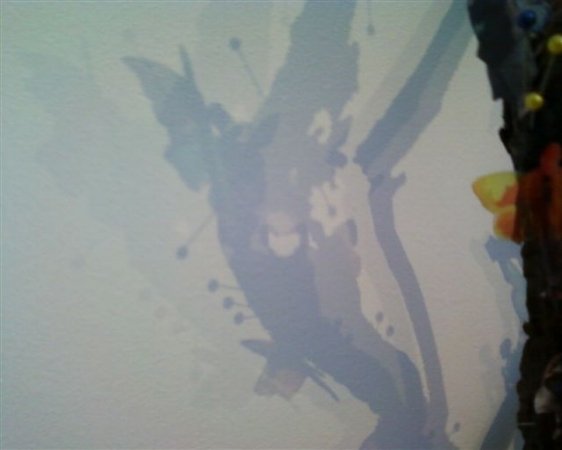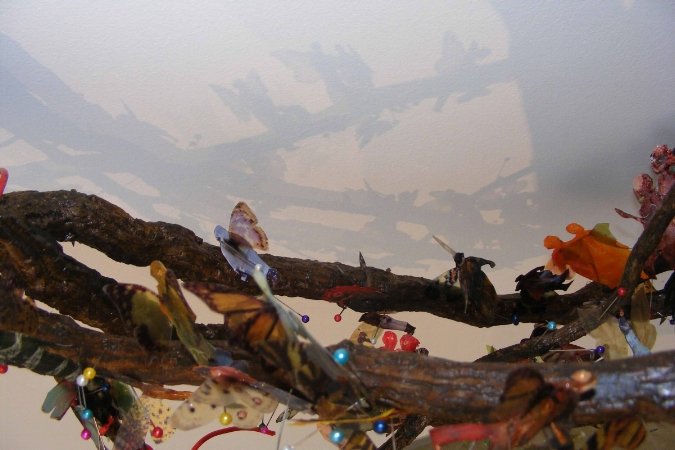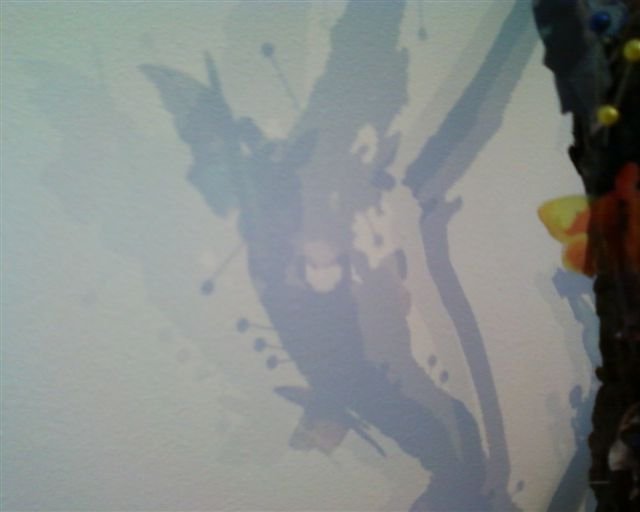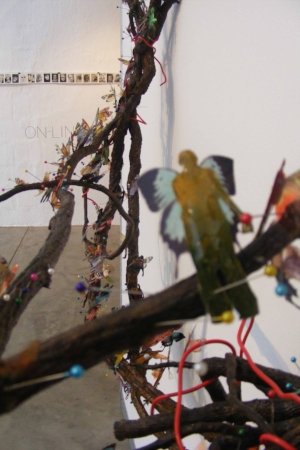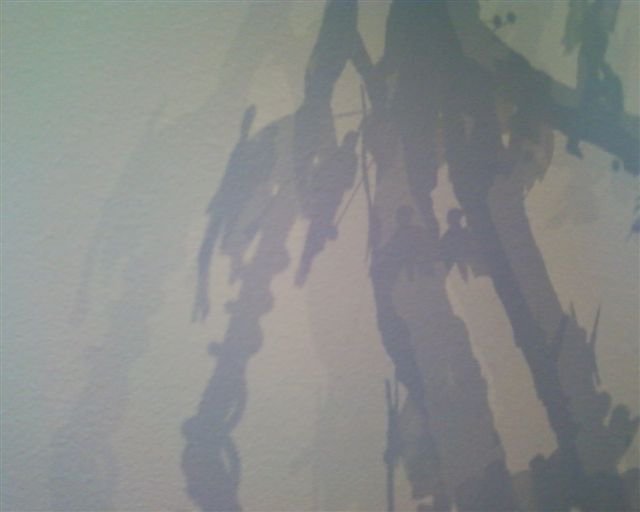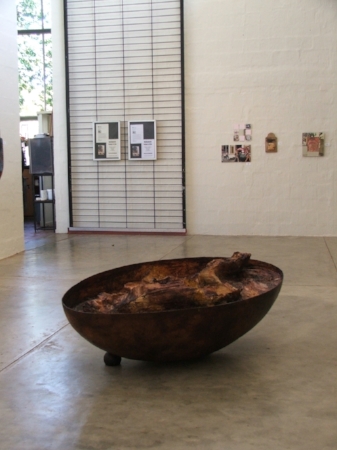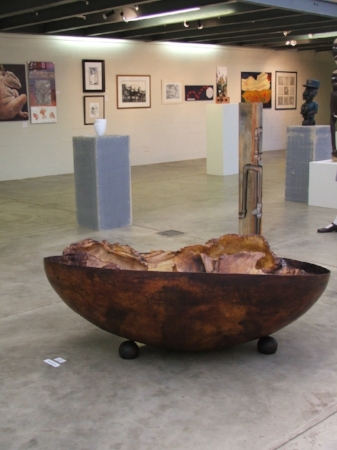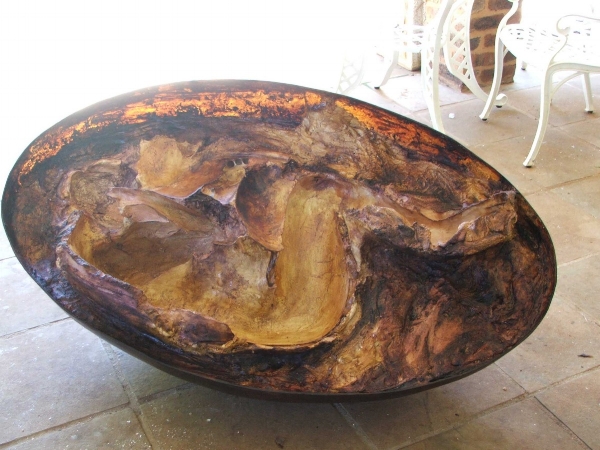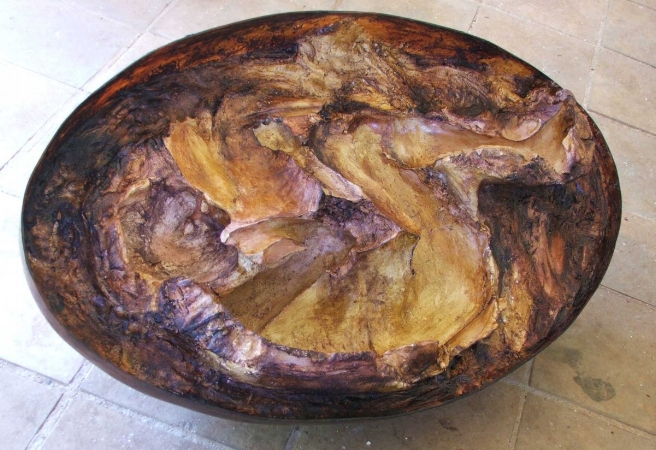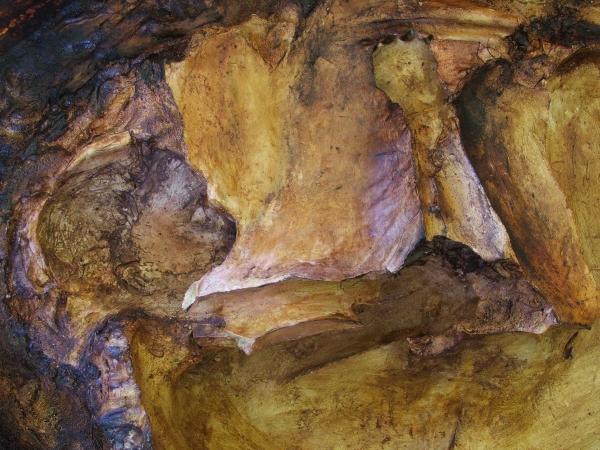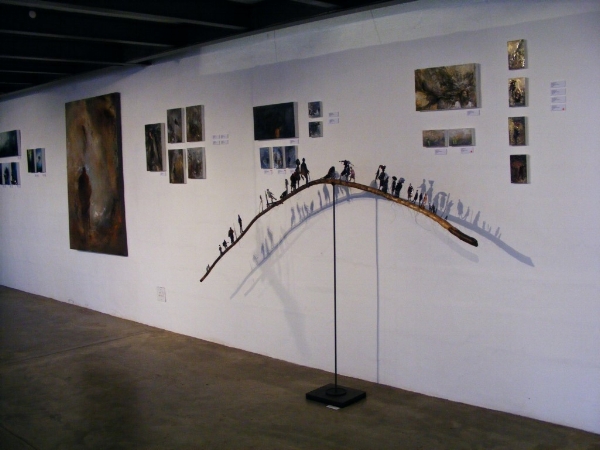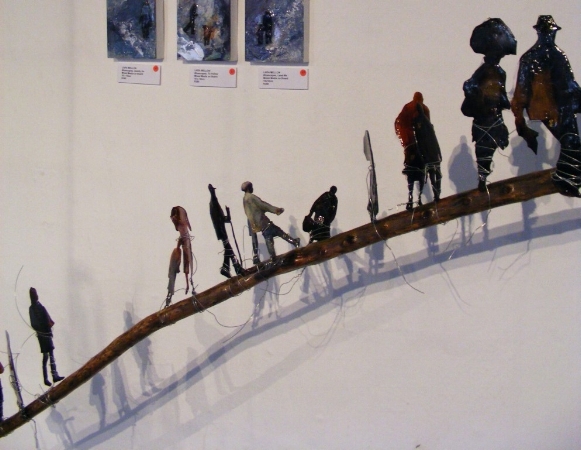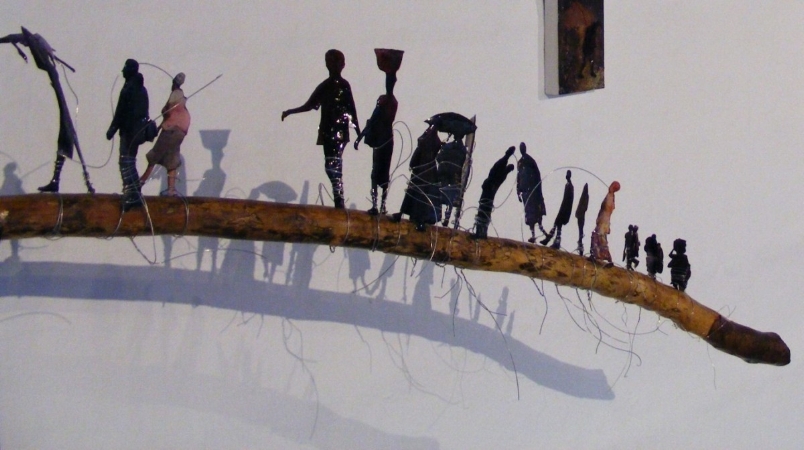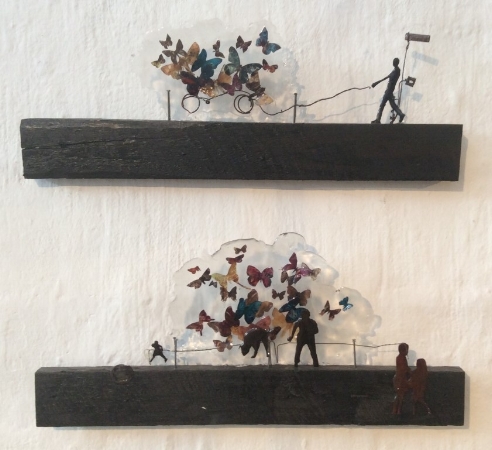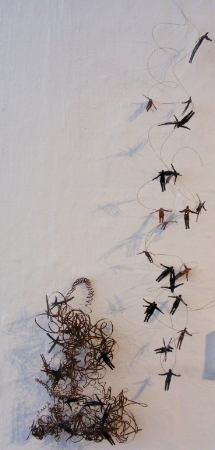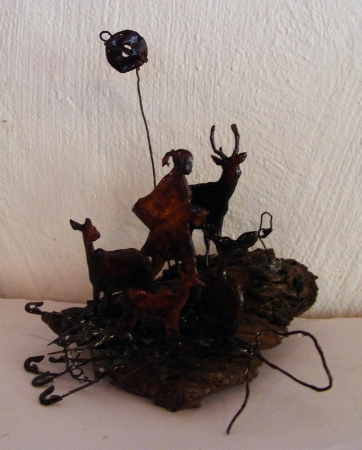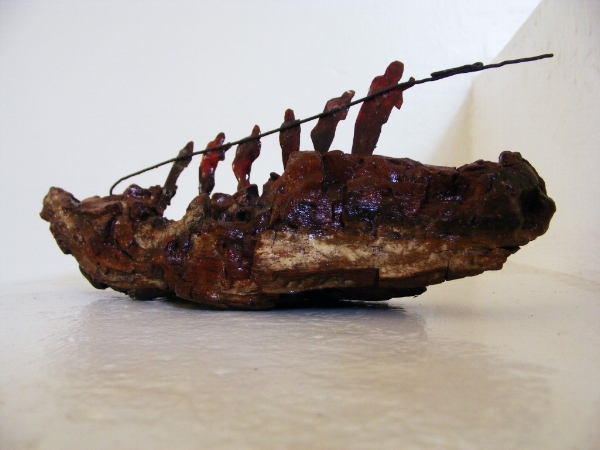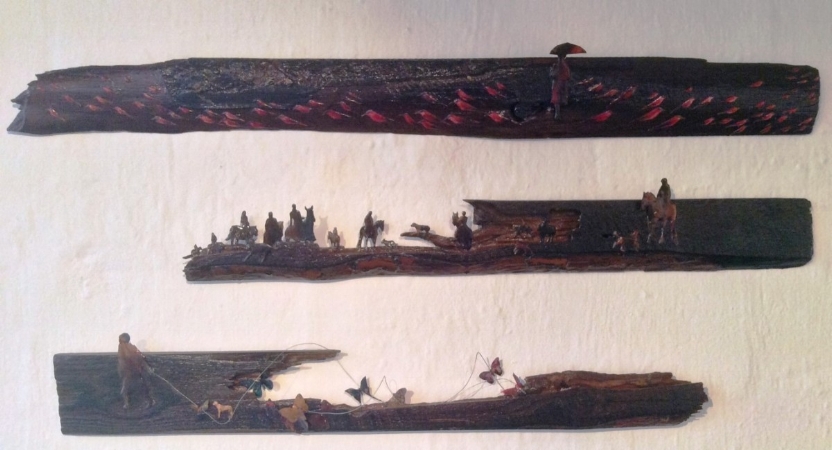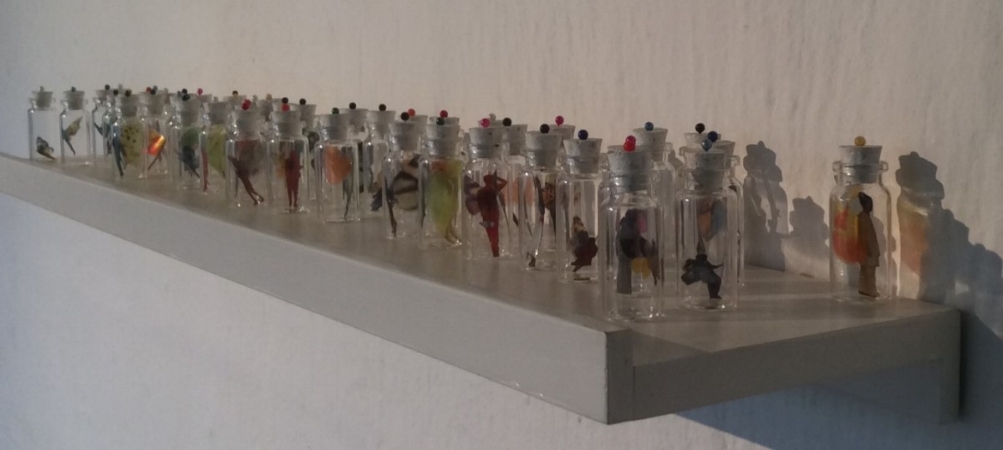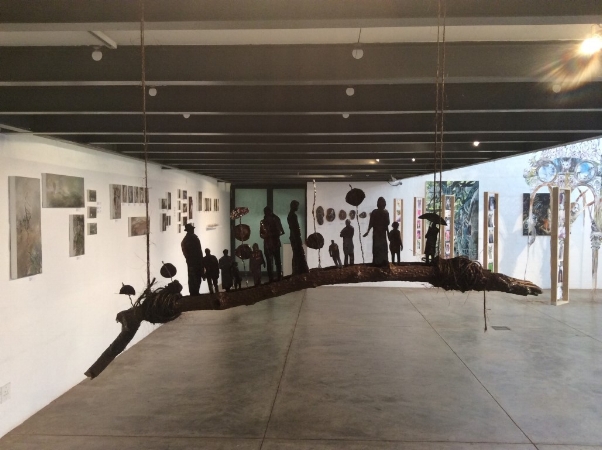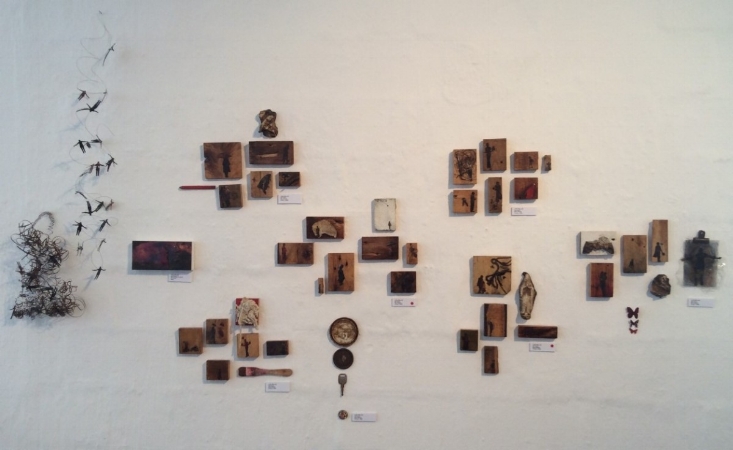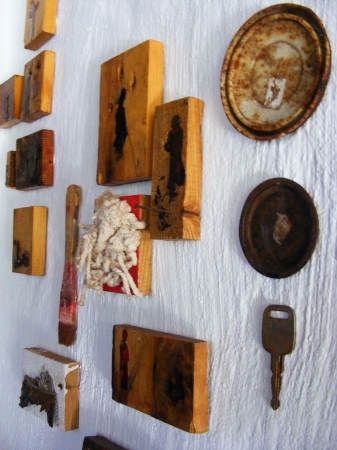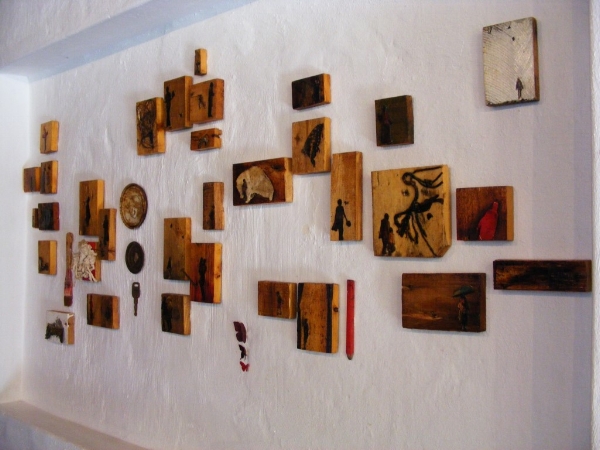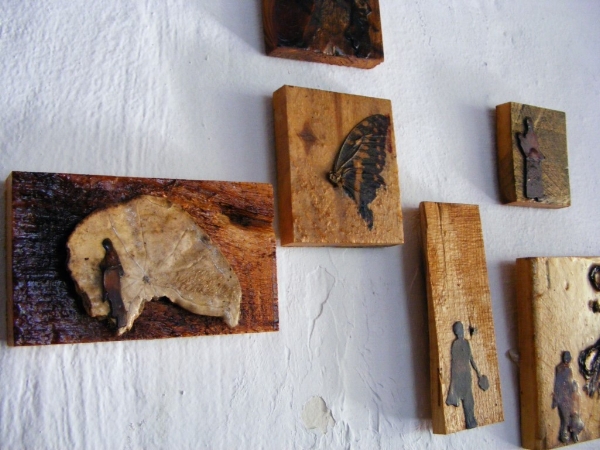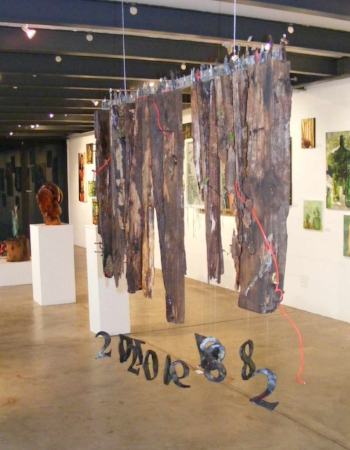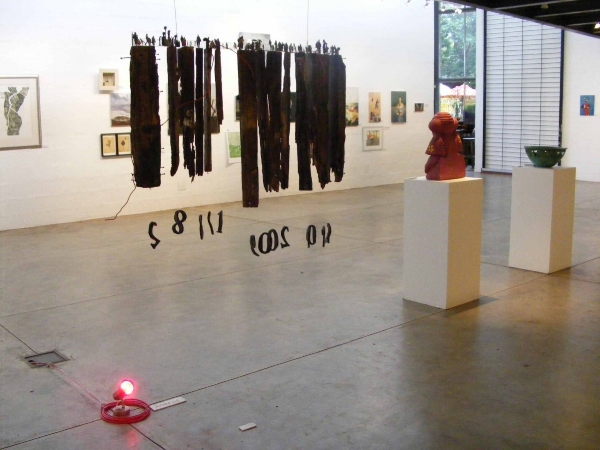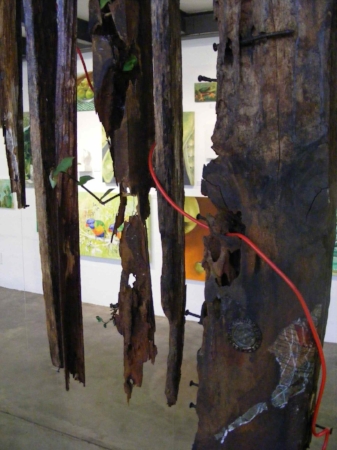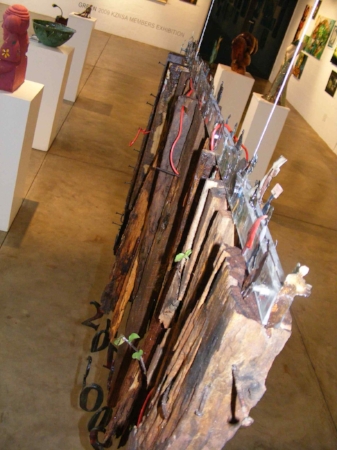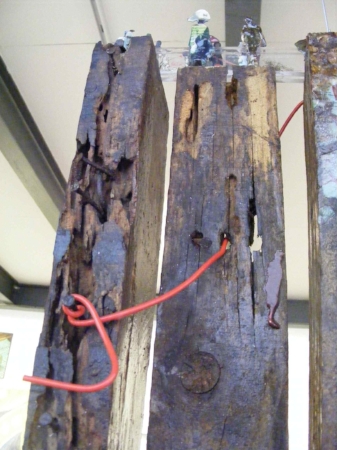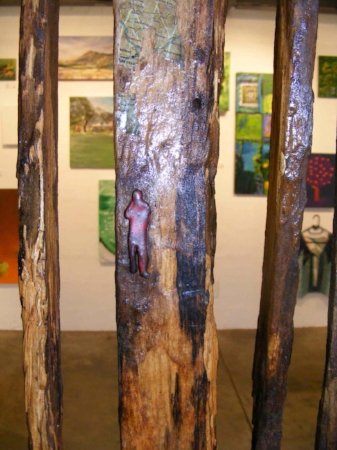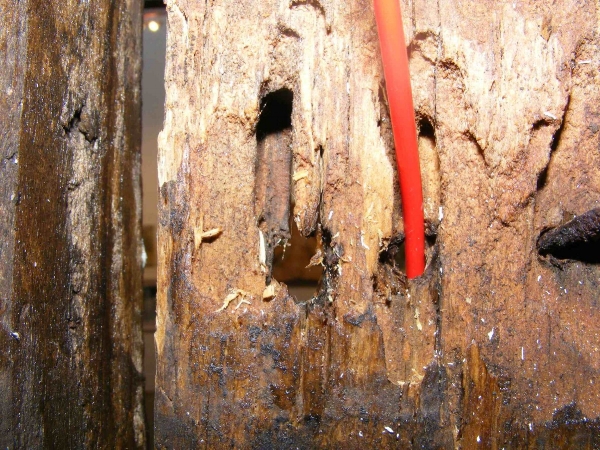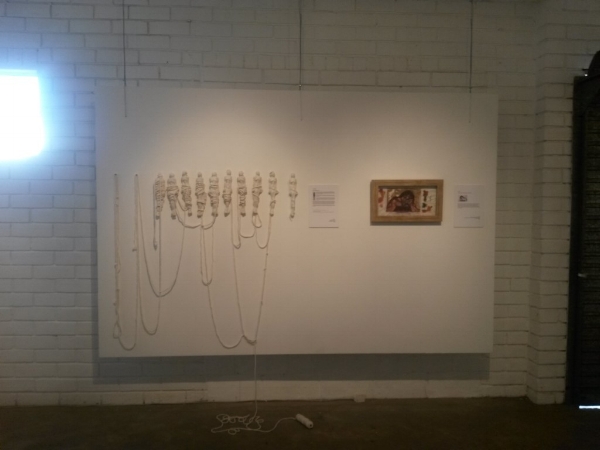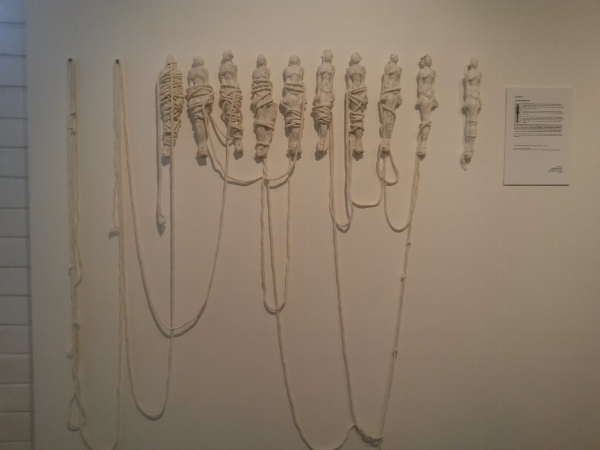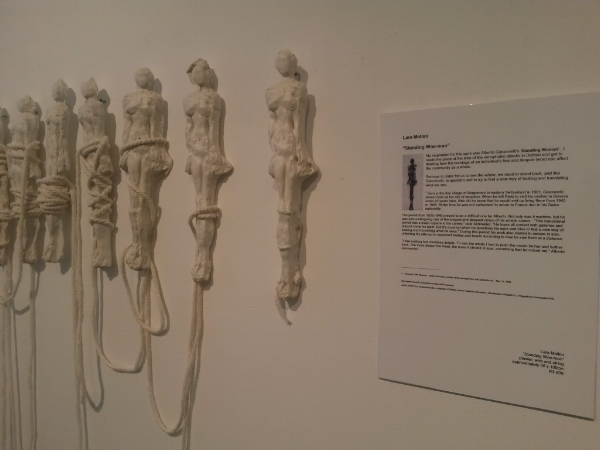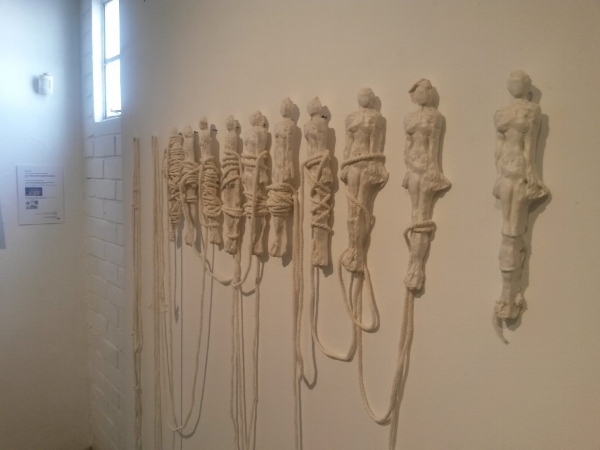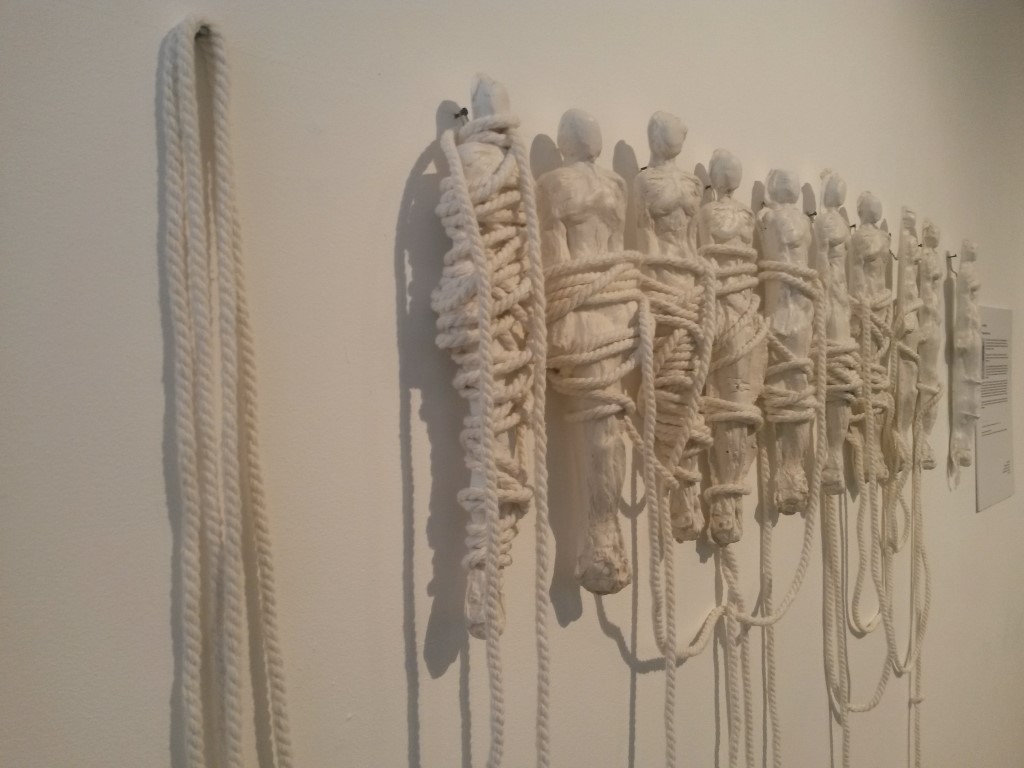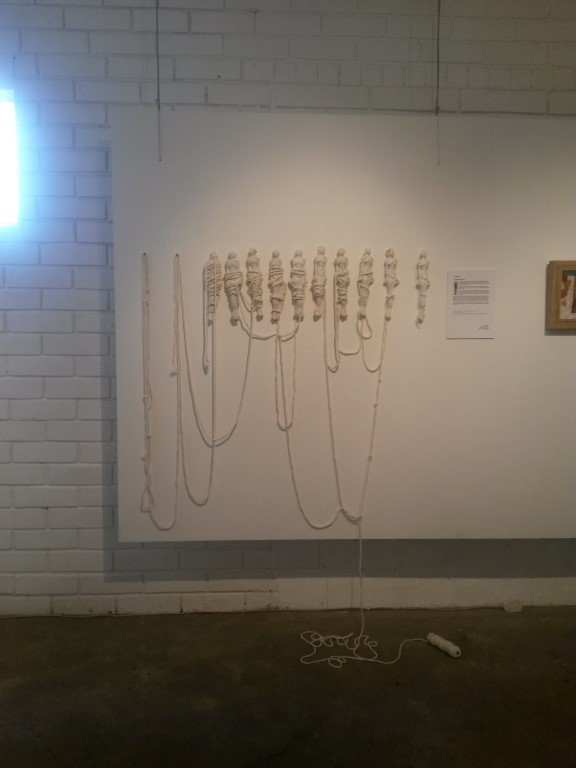ASSEMBLED WORKS
I have always been drawn to the ‘assemblage of things’. I love collecting, living with, enjoying and then combining found things that make up stories relevant for me. They’ become visual 3D pages from my life’s diary.
Birds on a Wire - SOLD - Found Wood, Wire, Oil, Resin - 22x4x8cm
We All Seek To Be Free - SOLD - 13 panels of 15x10x2cm with 4 flying figures
Artists were encouraged to engage with the ethos of the gallery with the theme of TRANSFORMATION-INCUBATION-ACTIVATION. Working in mixed media on small 10x15cm formats, I responded with thirteen blocks, interspersed with small flying figures suspended on the wall in-between the blocks.
ARTIST STATEMENT: We each have our own landscape, the geography of which is determined by our own unique circumstances. We are though, all connected in some way or another. In the end we each most likely want the same thing - freedom.
Birds on a Wire - AP004 - Found Wood, Wire, Oil, Resin - 21x12x4cm
Birds on a Wire - SOLD
butterflypeople@de-vined.con pincode *****
January 2010 (at the time Haiti Earthquake disaster) - The work consists of parallel themes of threat and beauty; specifically in the context of being on the net; being on-line. The starting point for this work, was in the representation of ‘the internet, the world wide web’ where users login and connect to information and to other users. To read more, see ‘STATEMENTS’
The Truth. Naked we leave as naked we arrive.
A naked impression of a body lies within the form of an egg, suggesting that what was there has either birthed from this, a womb … or possibly moved to beyond from what was rather its tomb. At birth we are reliant on the womb to provide us a safe haven to nourish our bodies into the world. At death we are reclaimed to the earth. Our own fragility in birth and in death is represented in the fetal position entombed within the egg form symbolizing that we have no power over our own birth or death. We come into this world naked, possessing nothing material … and leave the same way … as and only ourselves.
UNDERSTORY - @ The KZNSA Gallery, Durban South Africa:
Assembled works as part of a joint exhibition with Joan Martin at the KZNSA Gallery, 2014. See notes in Statements Tab. - SOLD
(Green)(Bar) Code: Red Alert! The bar code represents the man-made systems that we implement in an attempt to control our environment or to enable ever ‘improved’ efficiencies for increased sales and manufacture and ultimately increased consumption – often with an adverse affect on the environment. I have represented the bar code in wood that has been eaten, eroded and weathered, suggesting that ultimately, all man-made systems will succumb to the forces of nature. The first set of numbers: 27012009 - represents the date of this exhibition, and for this purpose represents the current - for it is now that we need to take heed urgently. The second set of numbers: 18882 - is the metric version for 6 ft (six feet) - the depth which generally is considered for burial … signifying our ultimate end on earth. That the numbers constantly sway in the air is significant in that nothing in time “stands still”. The ‘Green Bar Code’ system in South Africa used in our identity documents and the use of this in the title of the work is significant in suggesting that we as individuals all have a role to play in ensuring a greener environment. As in our identity number, there are also thirteen numbers in the work. The red light has reference to a bar code being scanned or being ‘read’ and brings our attention to what the code is ‘telling us’. There is a ‘Red Alert’ from and for our ‘Green Planet’. The red electrical cord from the light also represents the blood veins of life. The plant growing from out one of the pieces of wood suggests hope … and is significant in that it is growing from decay - new life created from the old (recycling), life ever striving and struggling to survive. The images of people at the top of the bar code are from photographs that I have been taking of people in and around Durban for the past 13 months. The images are of people across all spectrum of life, going about their daily business; people that are in the system and responsible for it and seemingly unaware of the urgency and severity of the environmental crisis. Remnants of map, stamps, newspaper and other images of people found within the bar code suggest that we are a part of the man-made systems and will also be a part of the natural system where we too will be weathered, eroded and ‘broken down’ back into the earth. The rusted bottle tops hint at a carefree approach to life where we disregard the impact we have on our planet. The time for partying though is over … the bar is closed and the code being signaled loud and clear is red alert! Red alert! RED ALERT!
Standing Woe-man April 2015
My inspiration for this work was Alberto Giacometti’s ‘Standing Woman’. I made the piece at the time of the xenophobic attacks in Durban and got to thinking how the bondage of an individual’s fear and despair (woe) can affect the community as a whole. Perhaps in order for us to see the whole, we need to stand back, and like Giacometti, to question and to try to find a new way of looking and translating what we see. Born in the tiny village of Borgonovo in eastern Switzerland in 1901, Giacometti chose Paris as his city of adoption. When he left Paris to visit his mother in Geneva some 20 years later, little did he know that he would end up living there from 1942 to 1945. At the time he was not authorized to return to France due to his Swiss nationality. The period from 1935-1946 proved to be a difficult one for Alberto. Not only was it wartime, but he was also undergoing one of the longest and deepest crises of his artistic career. "This transitional period was a major rupture in his career," said Schneider. "He loses all contact with galleries and doesn't show his work. But it's a period when he questions his work and tries to find a new way of looking and translating what he sees." During this period his work also started to reduce in size, reflecting his attempt to represent bodies and heads according to how he saw them at a distance.
"I saw nothing but countless details. To see the whole I had to push the model further and further back. The more distant the head, the more it shrank in size, something that terrorized me," Alberto commented.
– Geneva’s Rath Museum: Nadia Schneider, curator of the retrospective, told swissinfo.ch. – Nov 11, 2009
http://www.swissinfo.ch/eng/giacometti-and-his-geneva-crisis/130591n s_mchannel=ps&ns_campaign=DSA&ns_source=adw&ns_linkname=_cat:swissinfo.ch&gclid=CLLY8ujgqMUCFQcewwodsrcARQ


